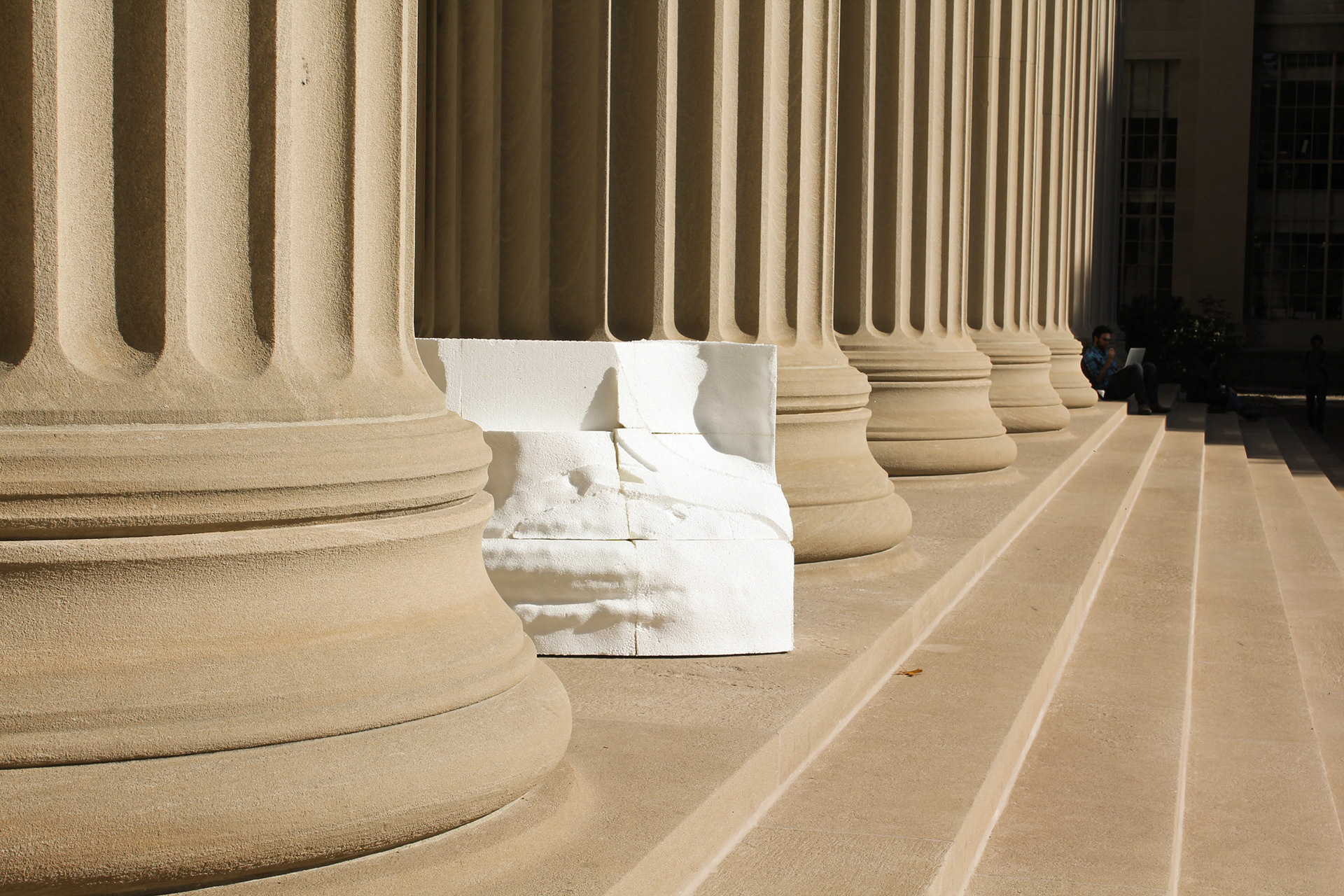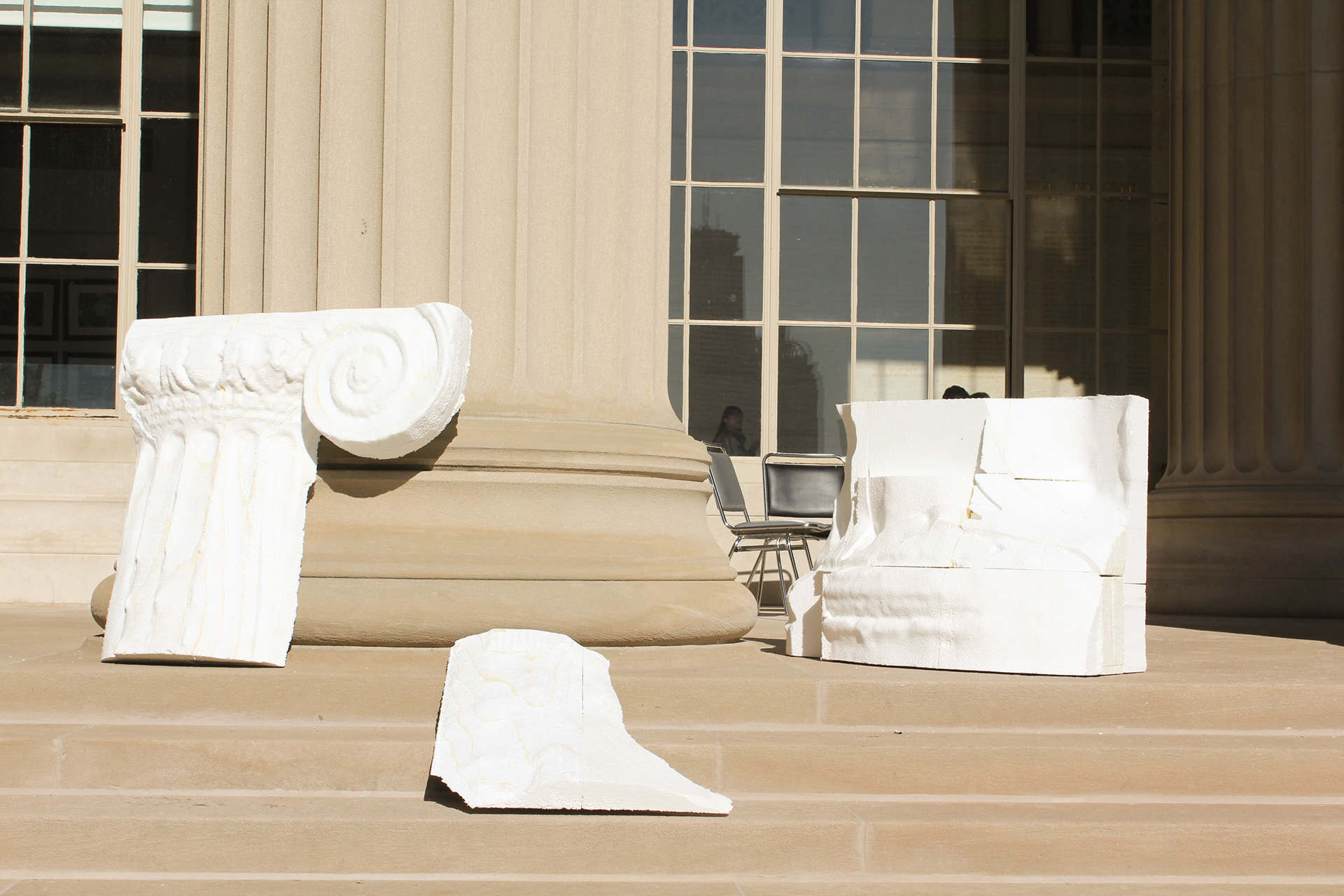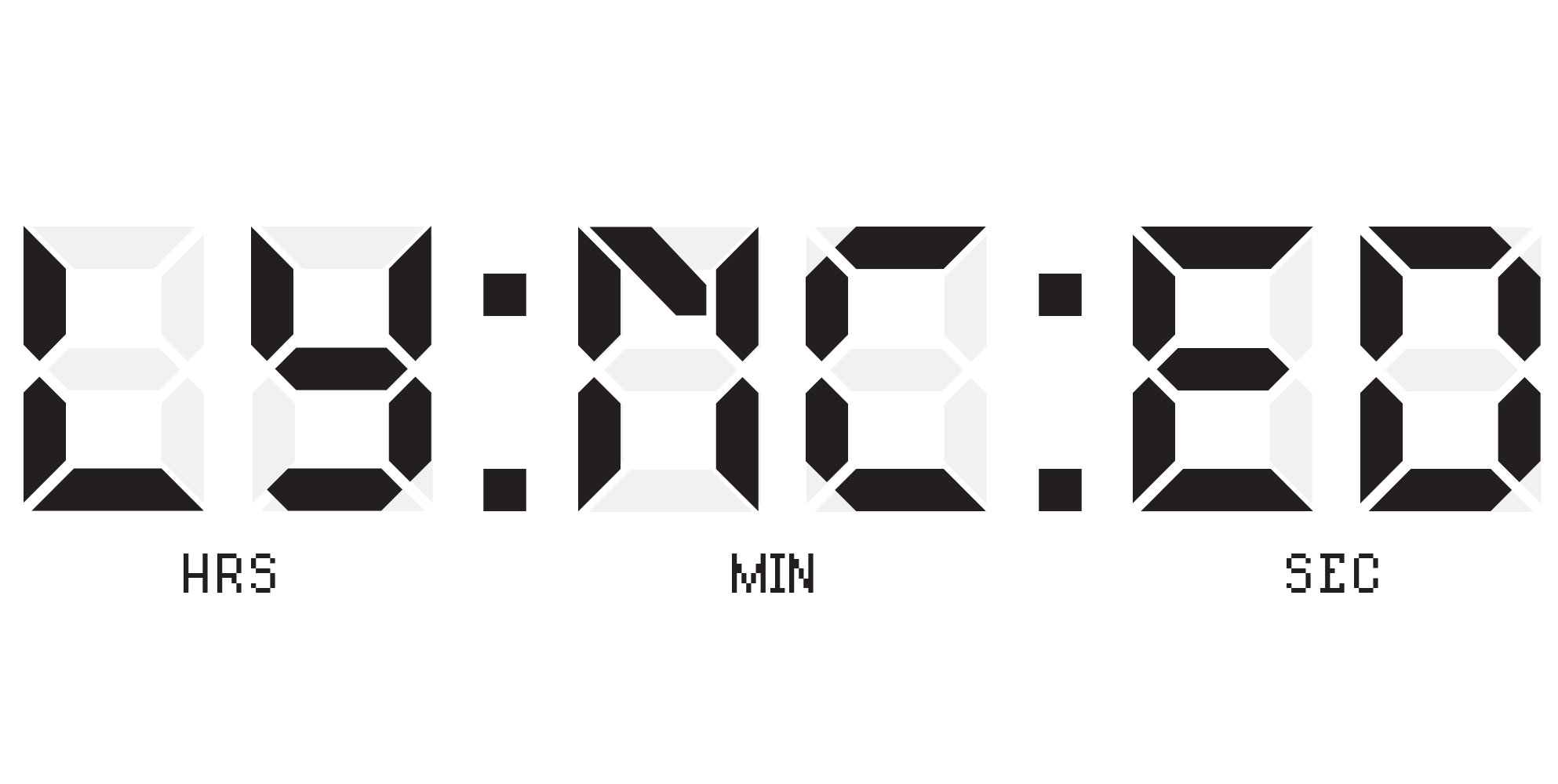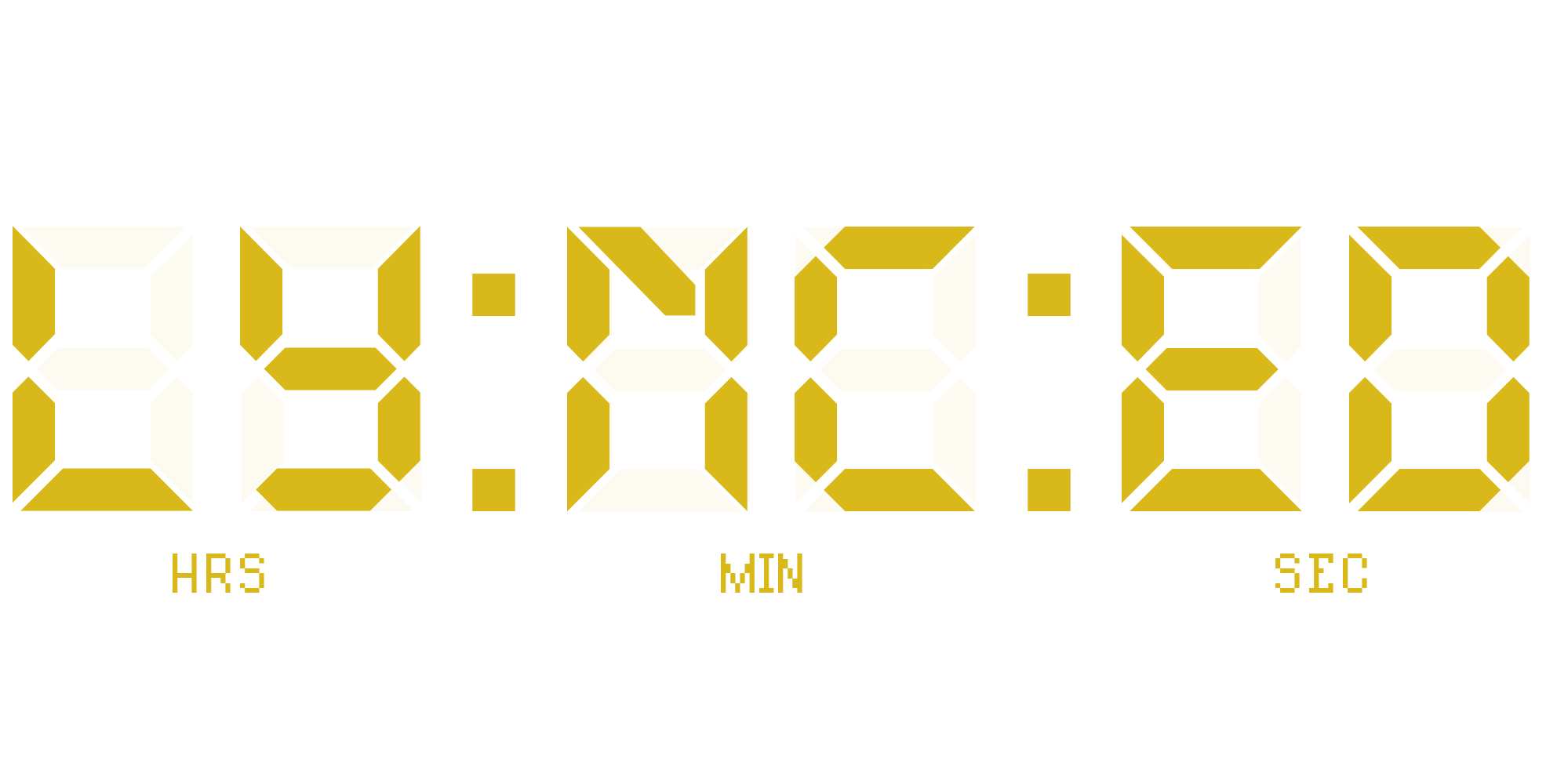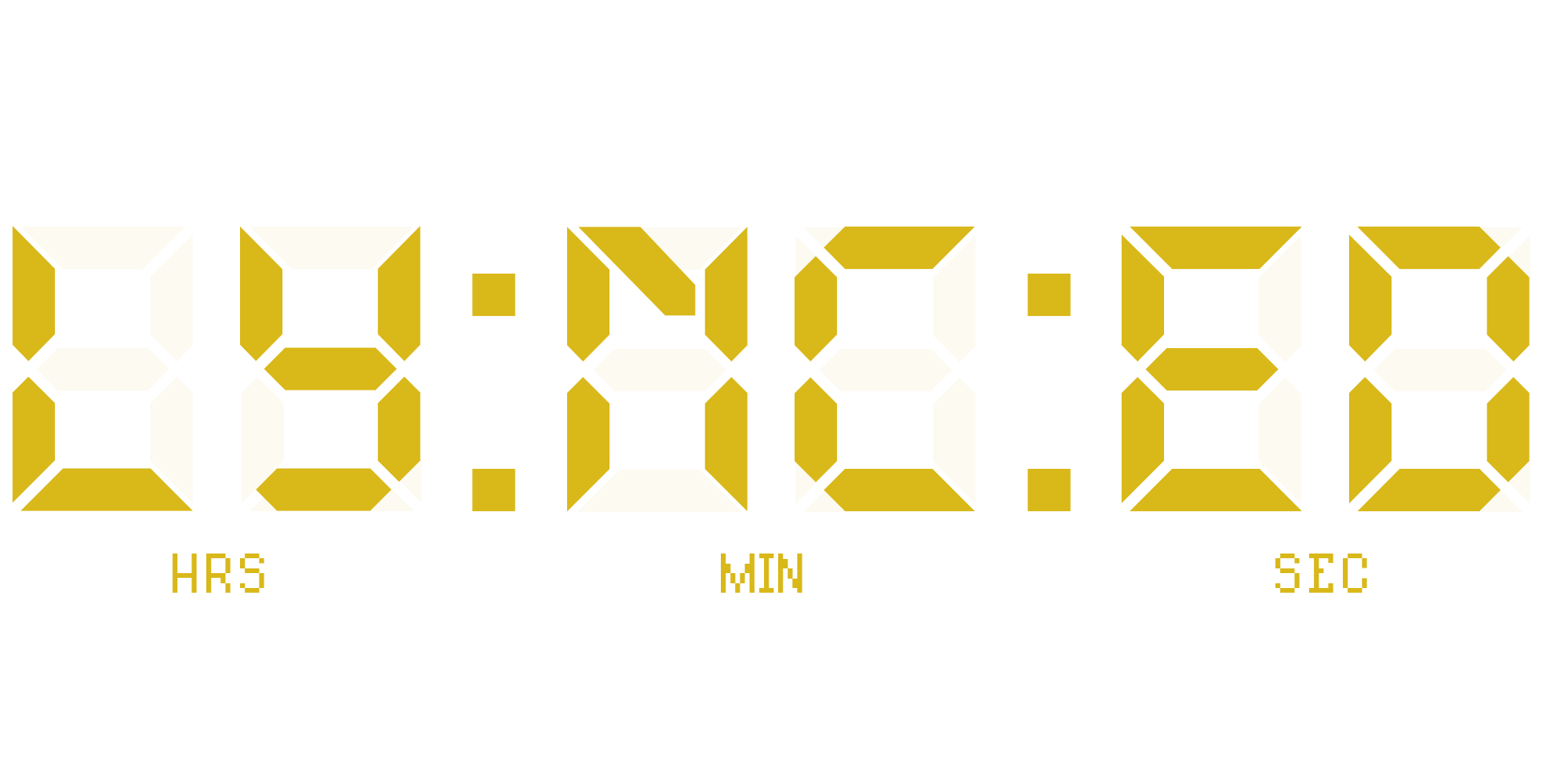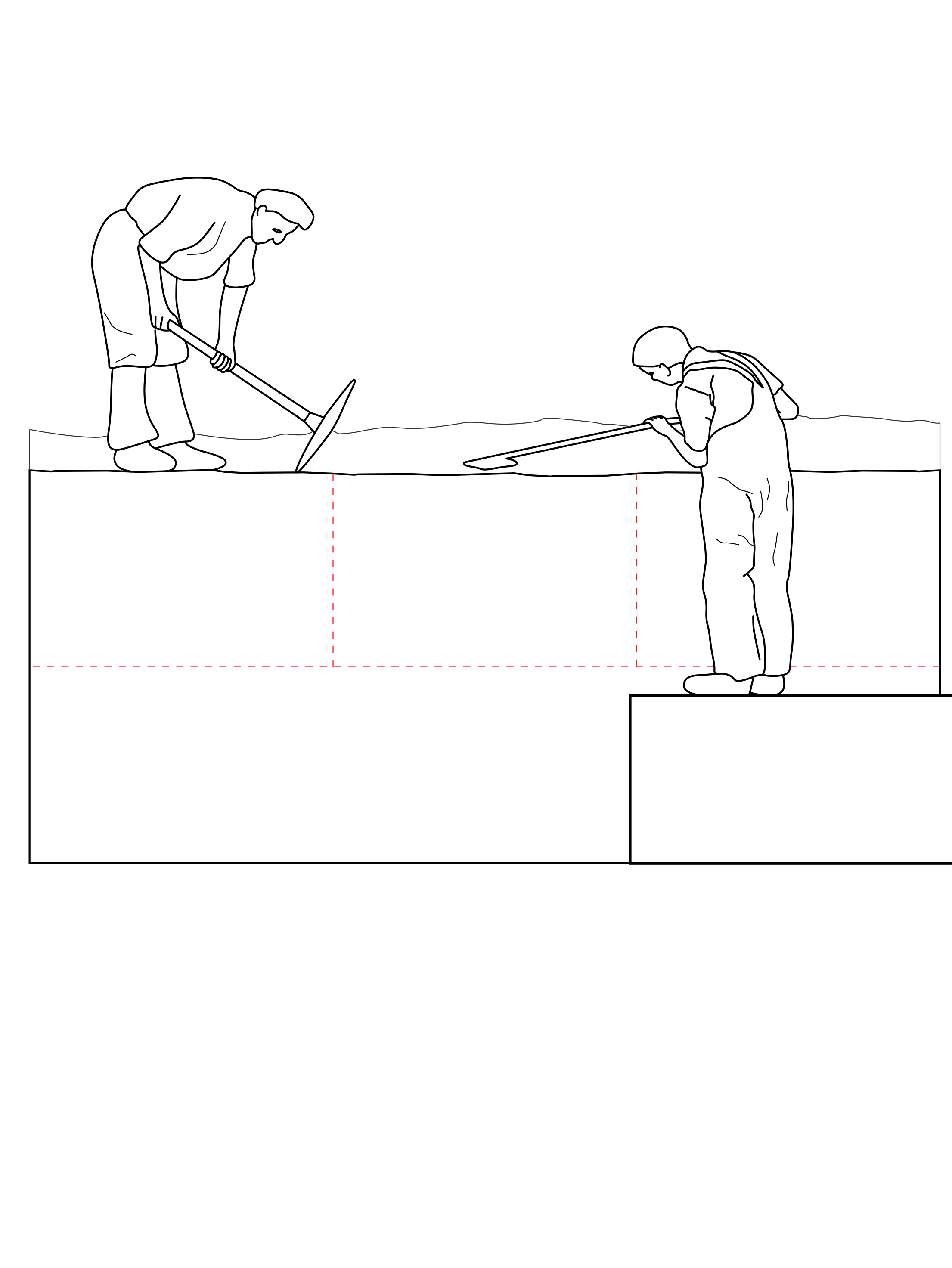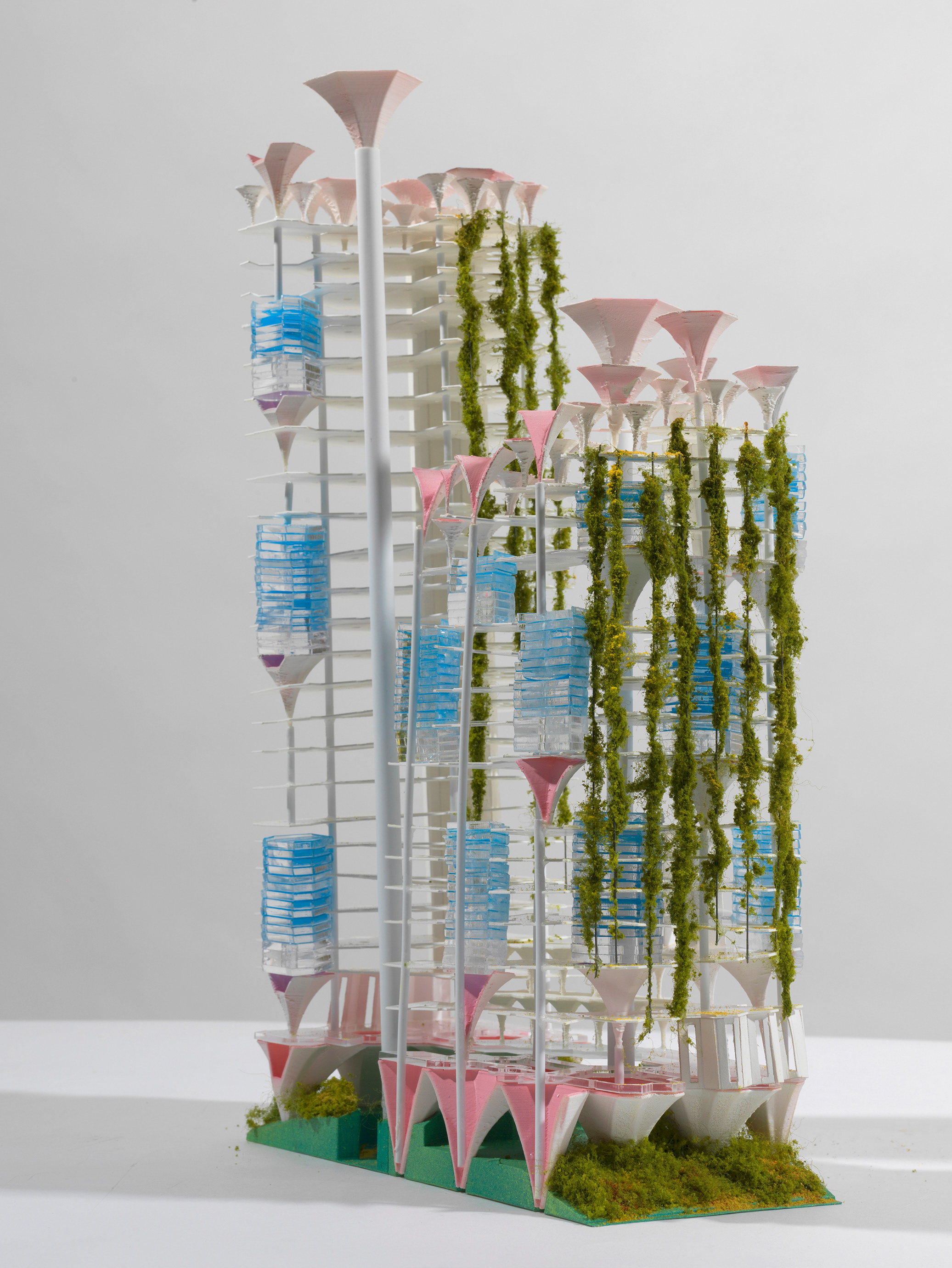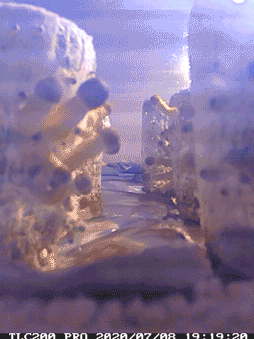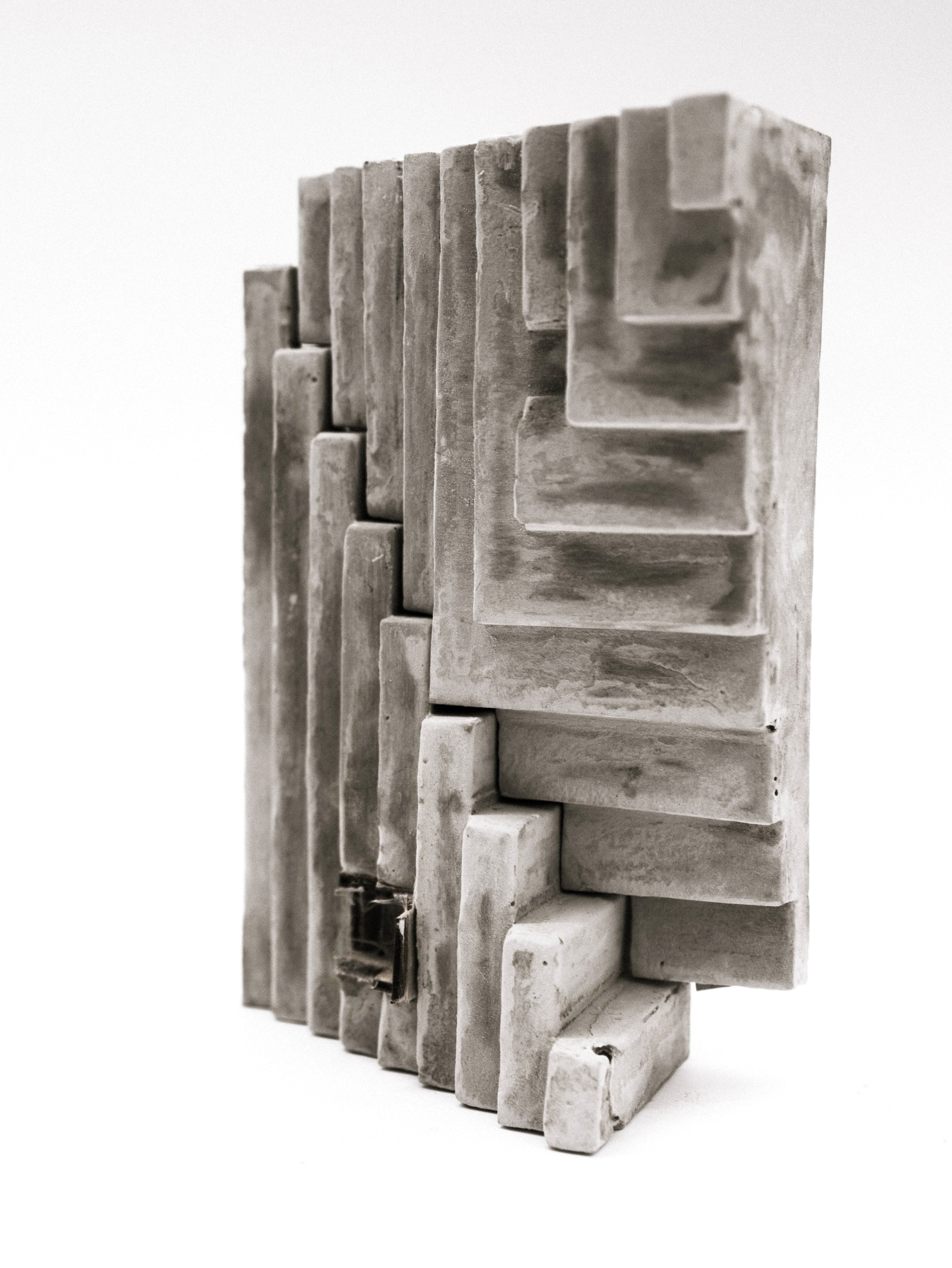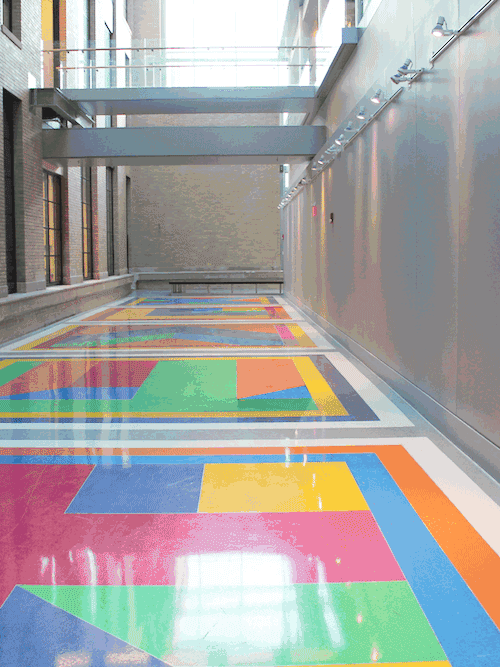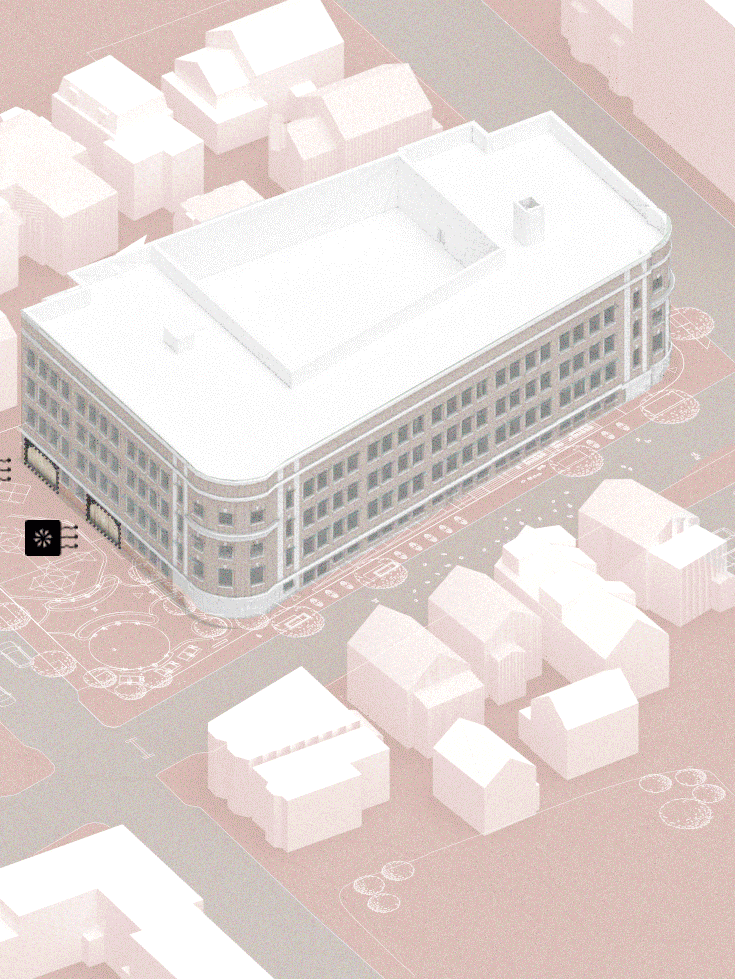ARTIFACTS AND MATERIAL TRANSLATION
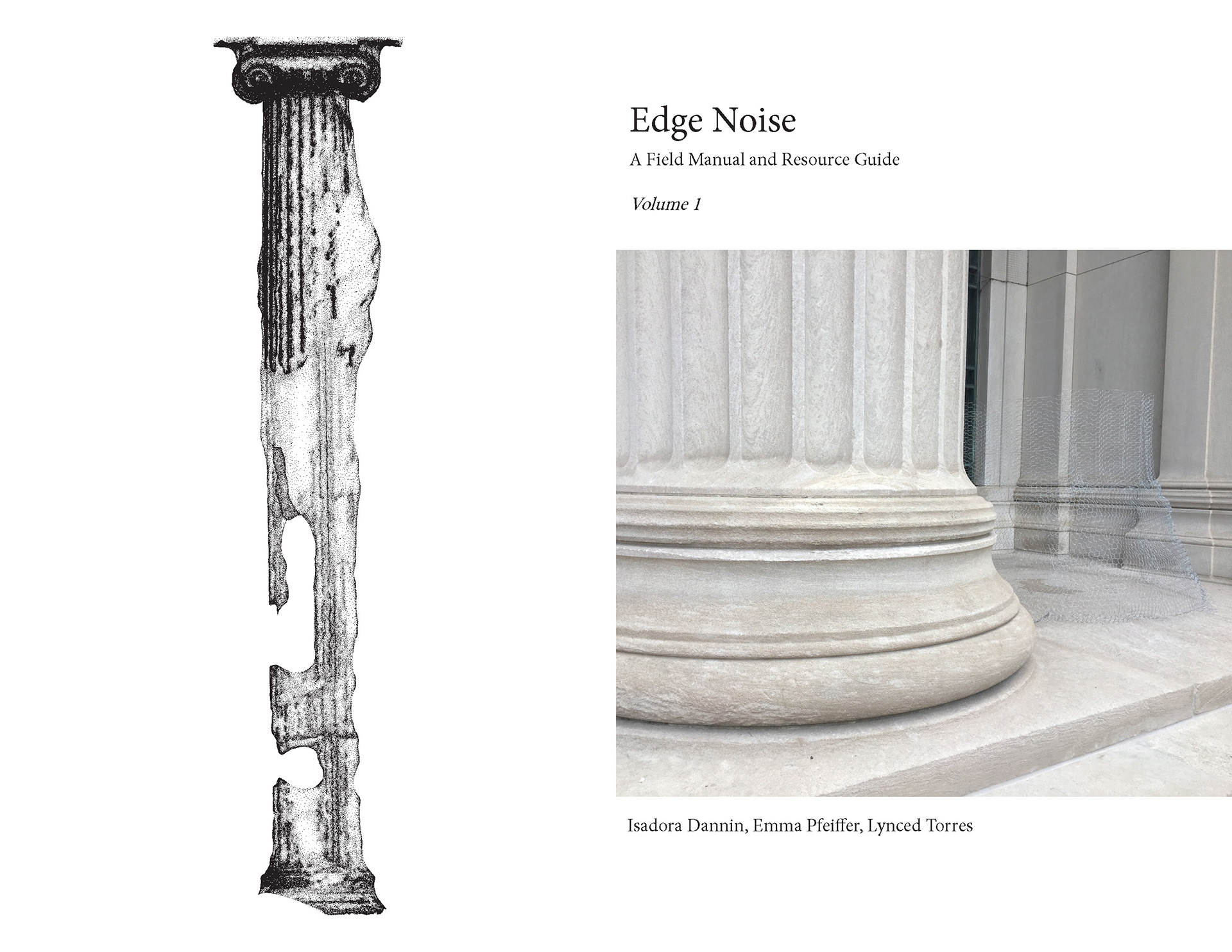

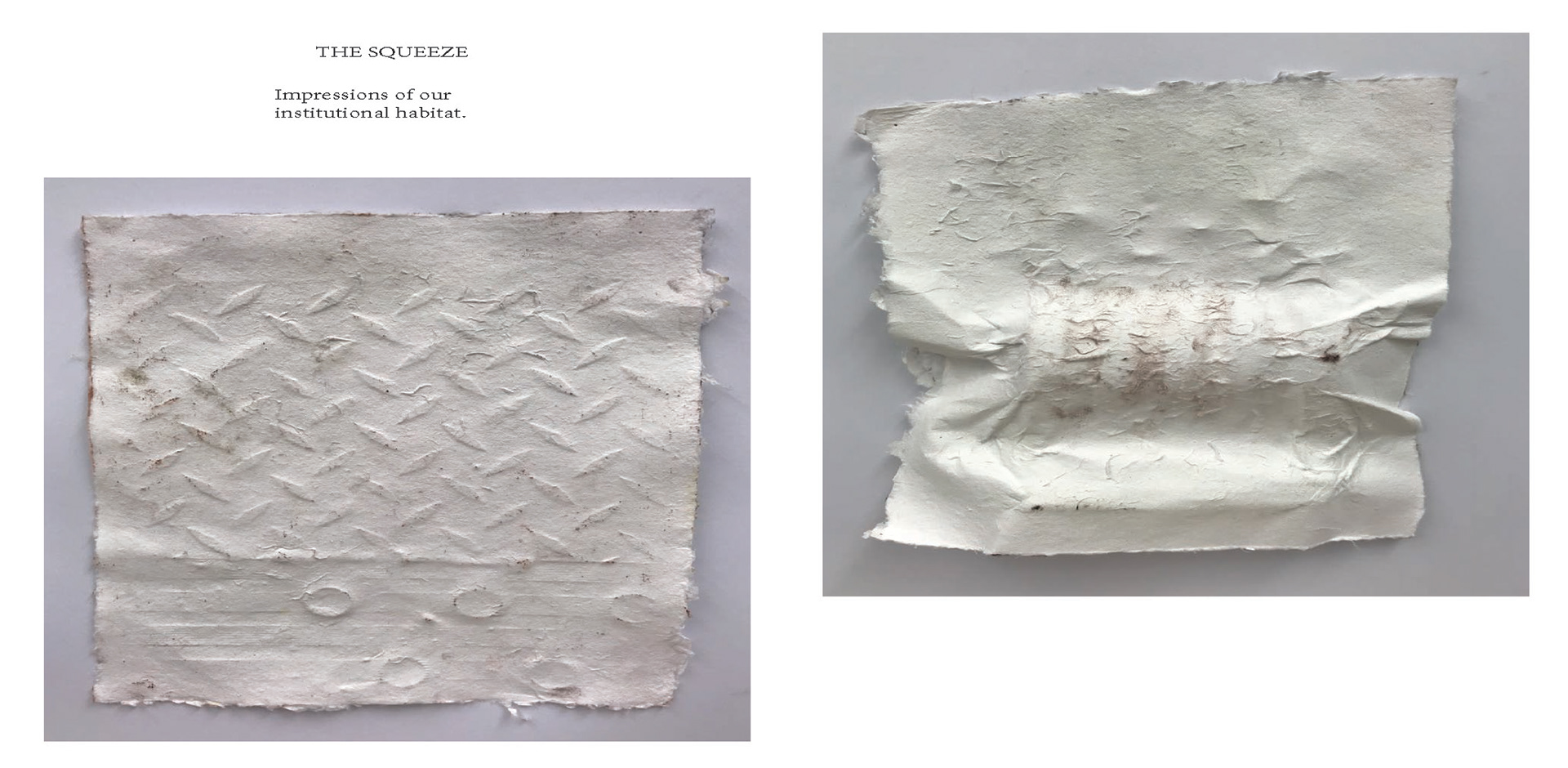
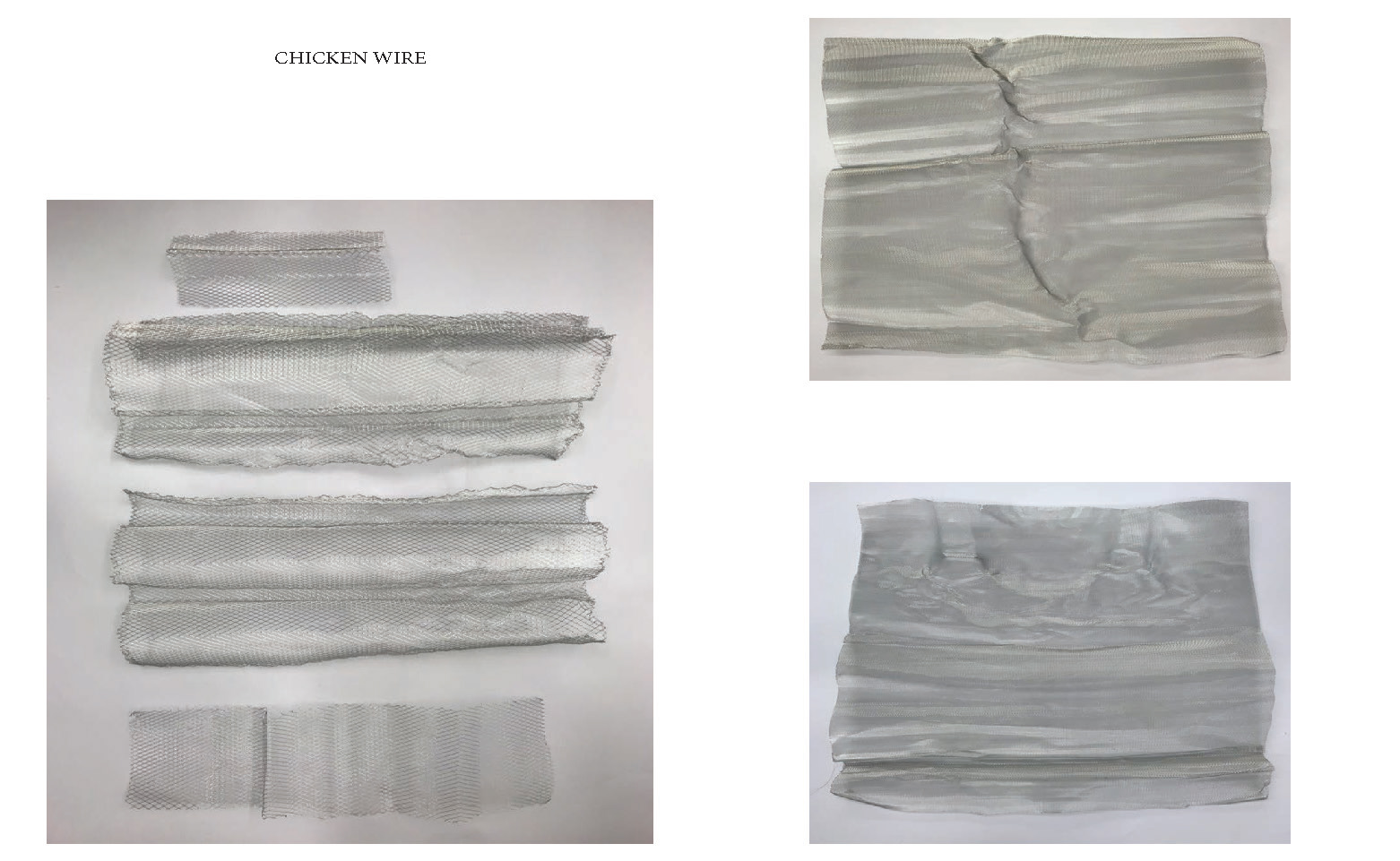

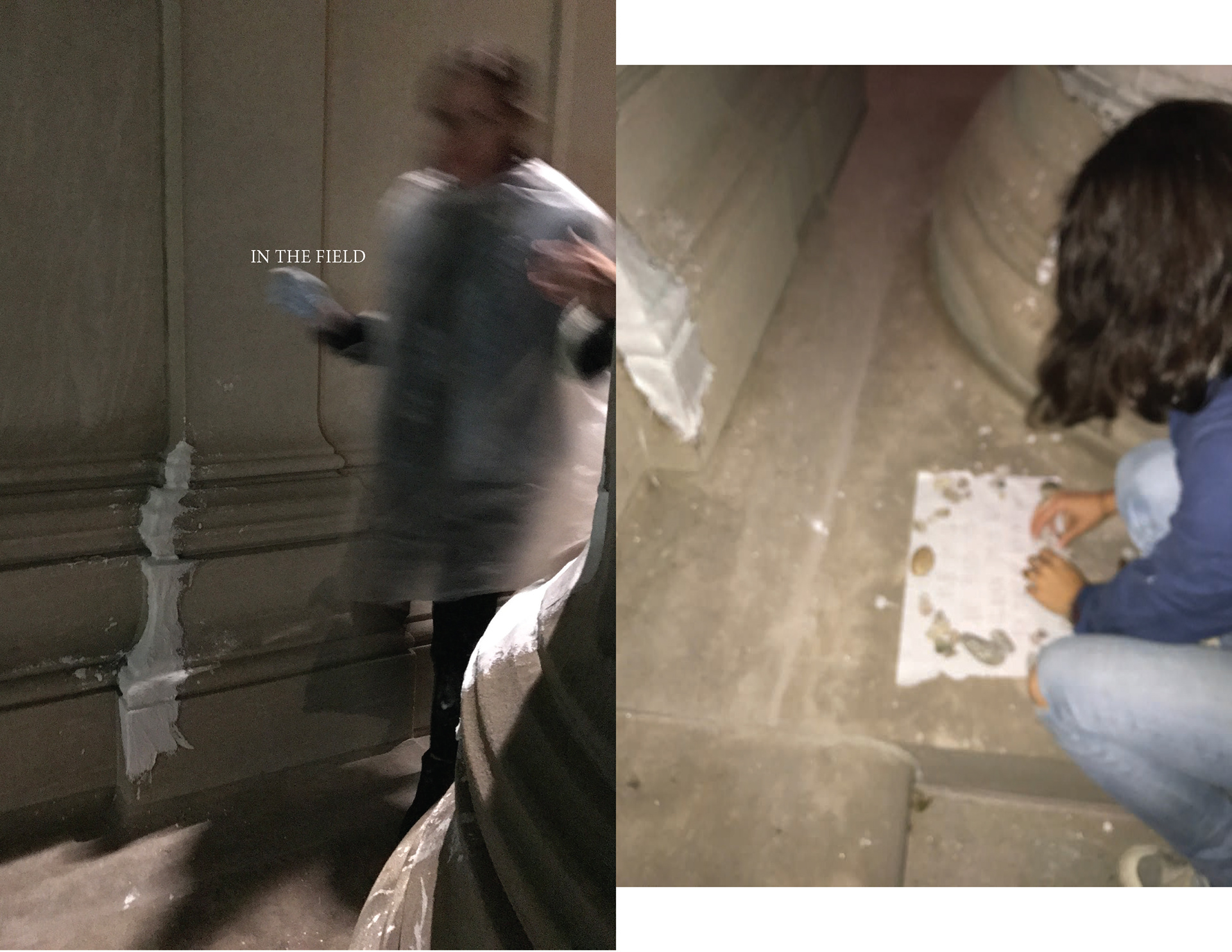
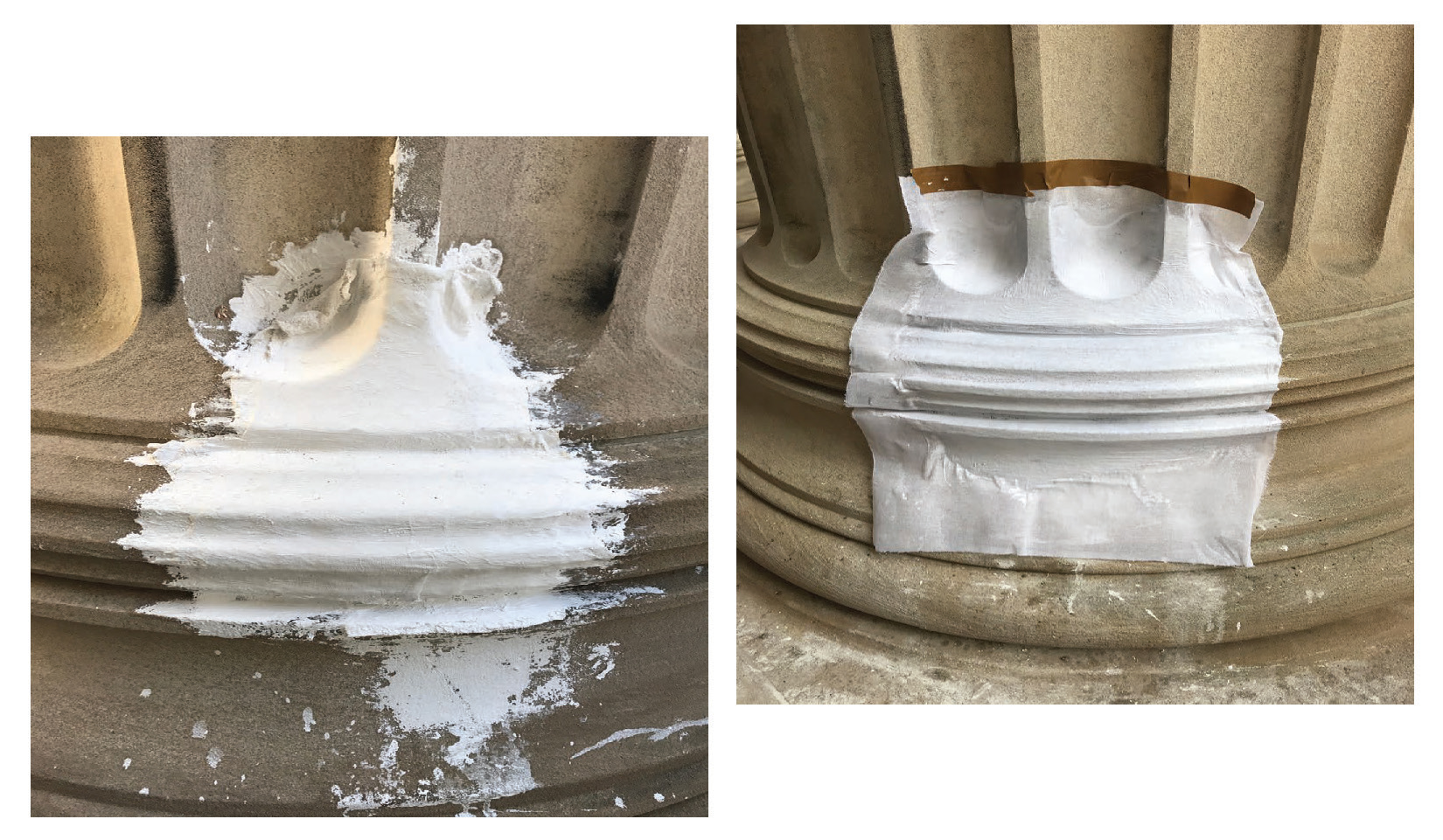





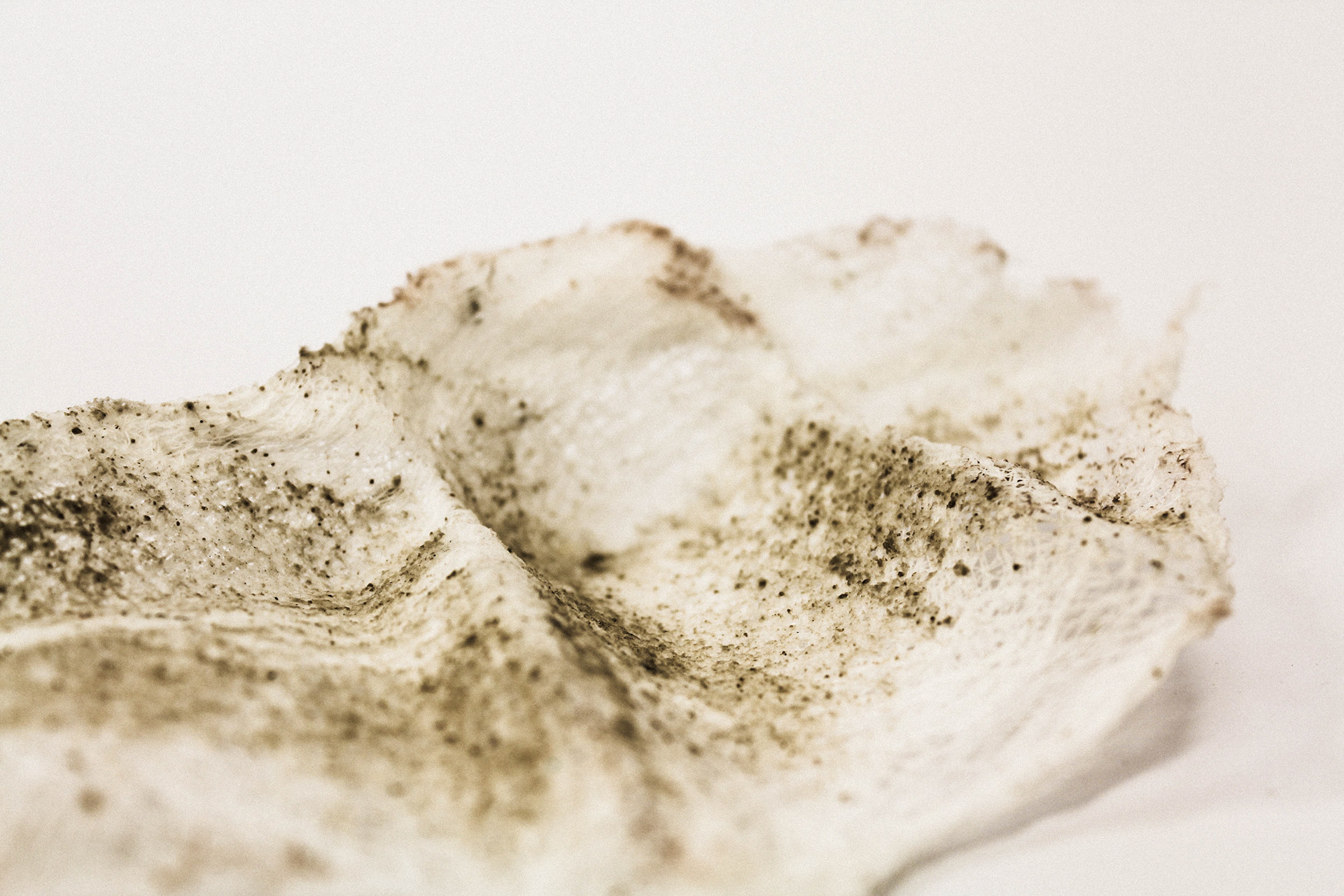

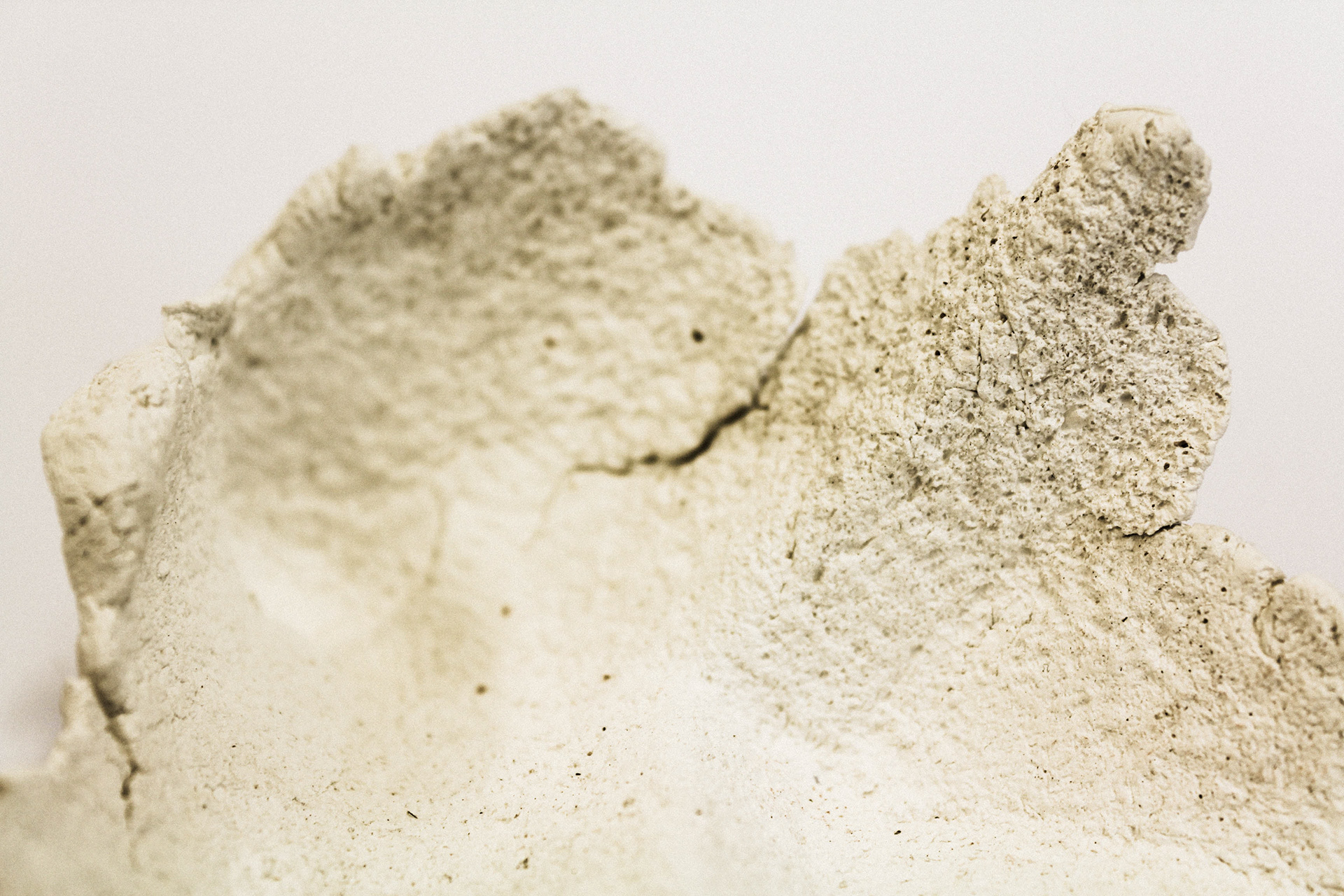
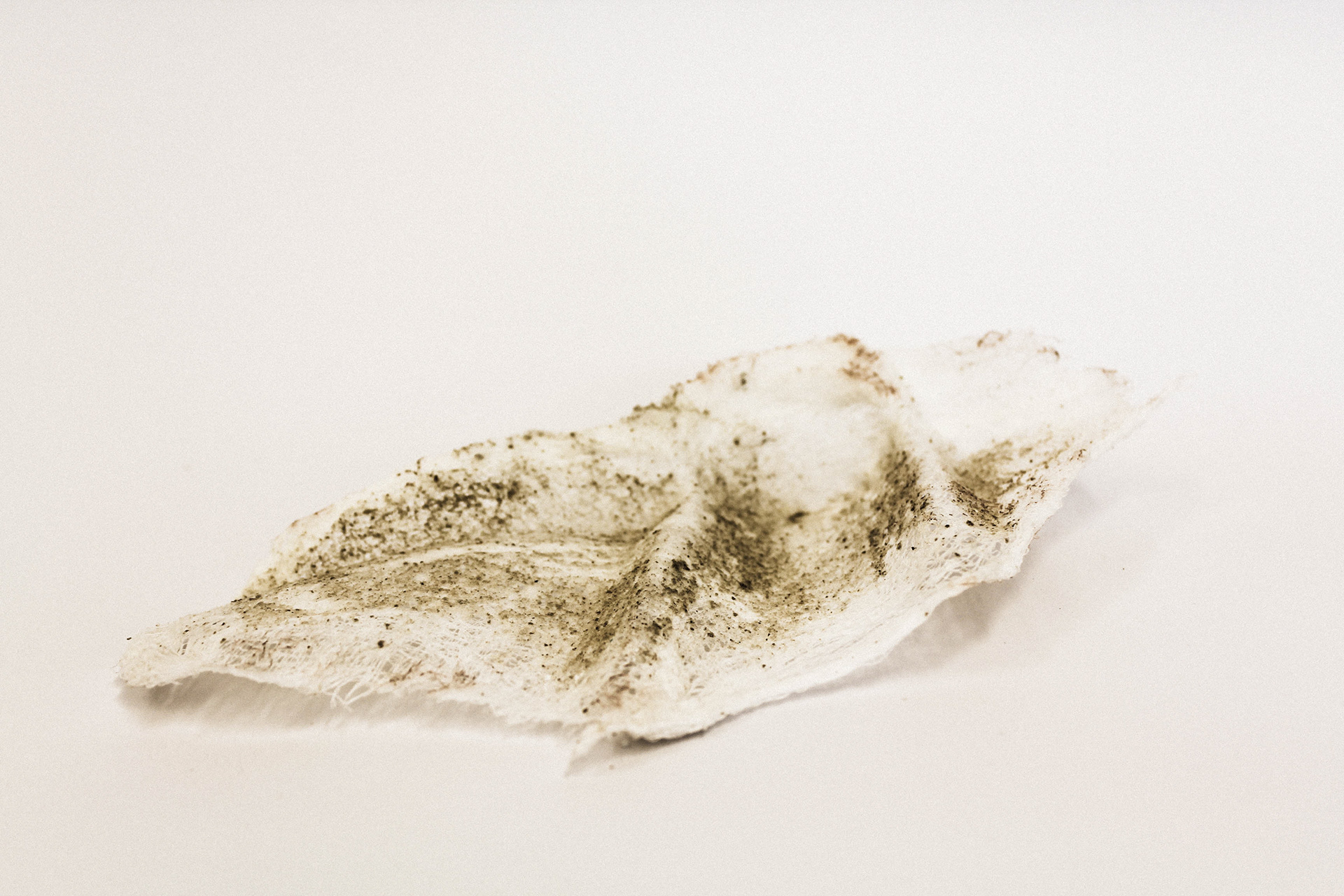

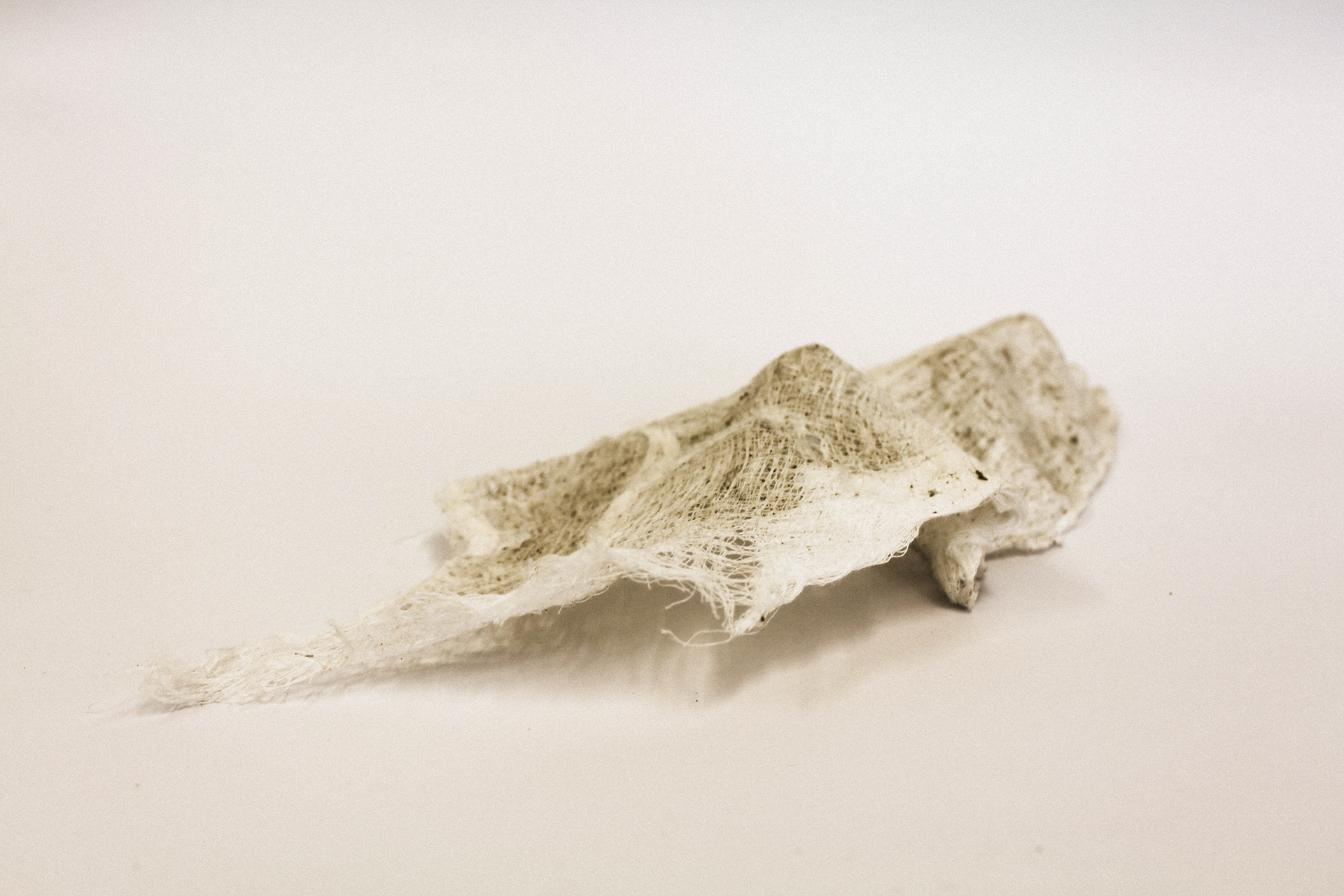
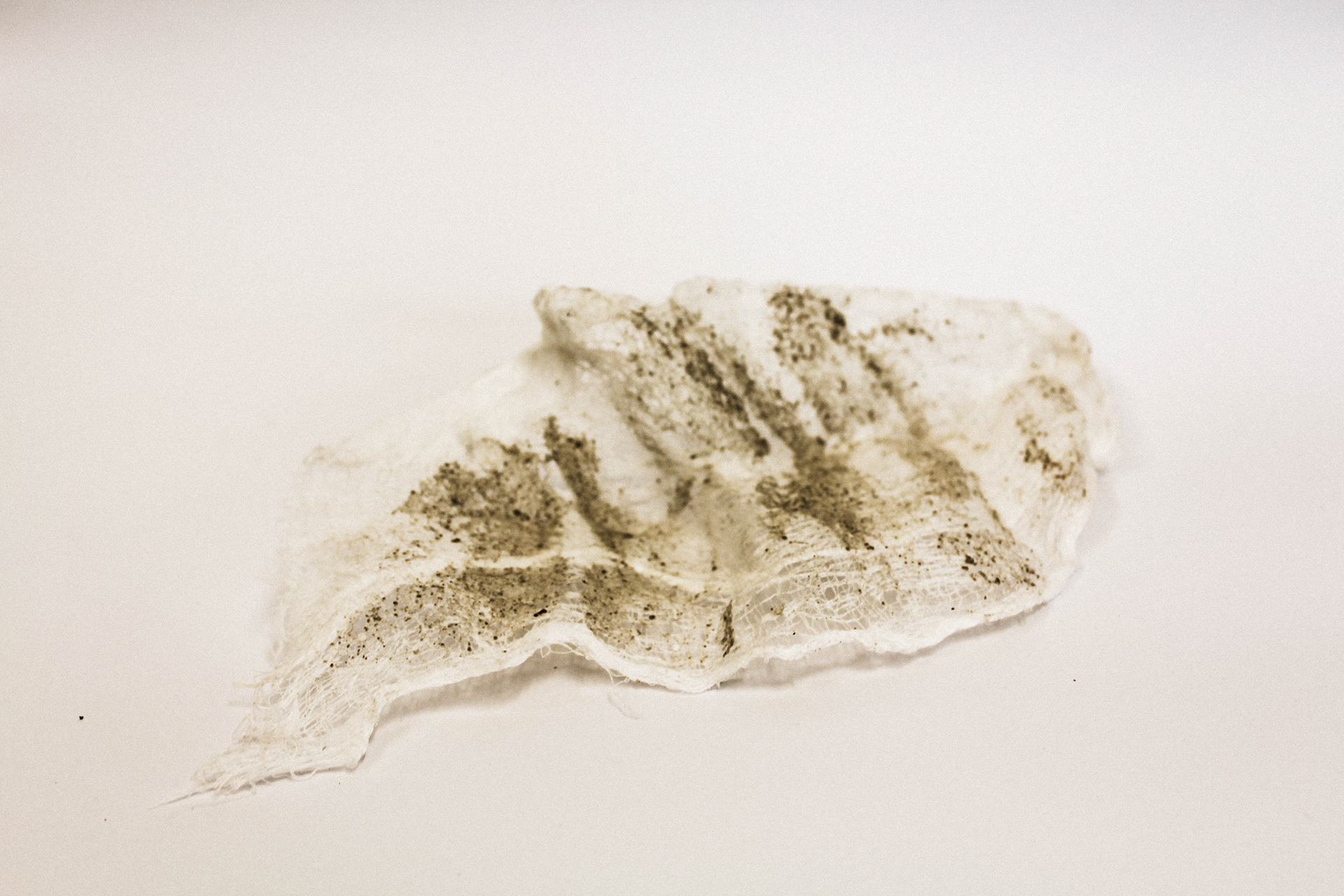
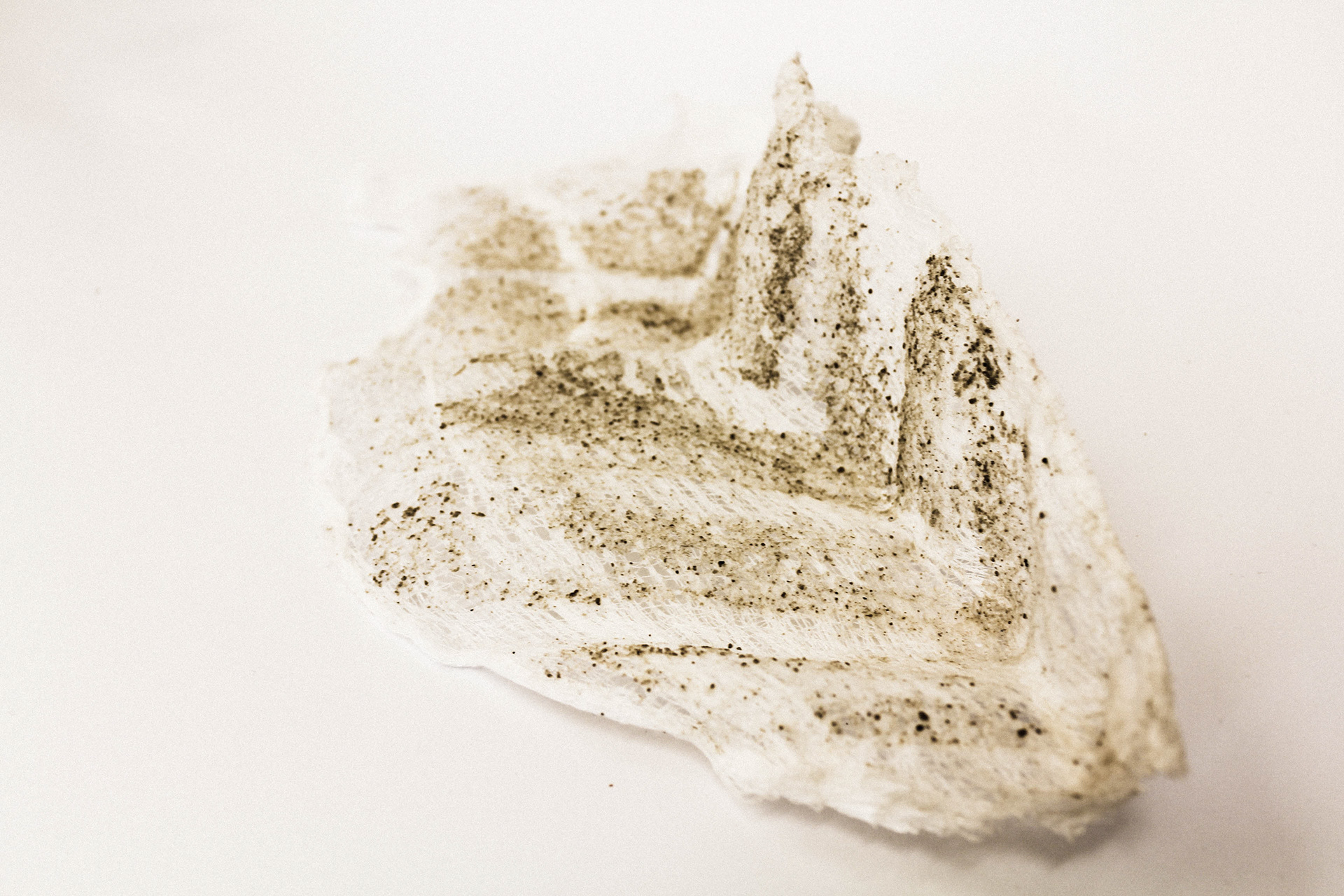


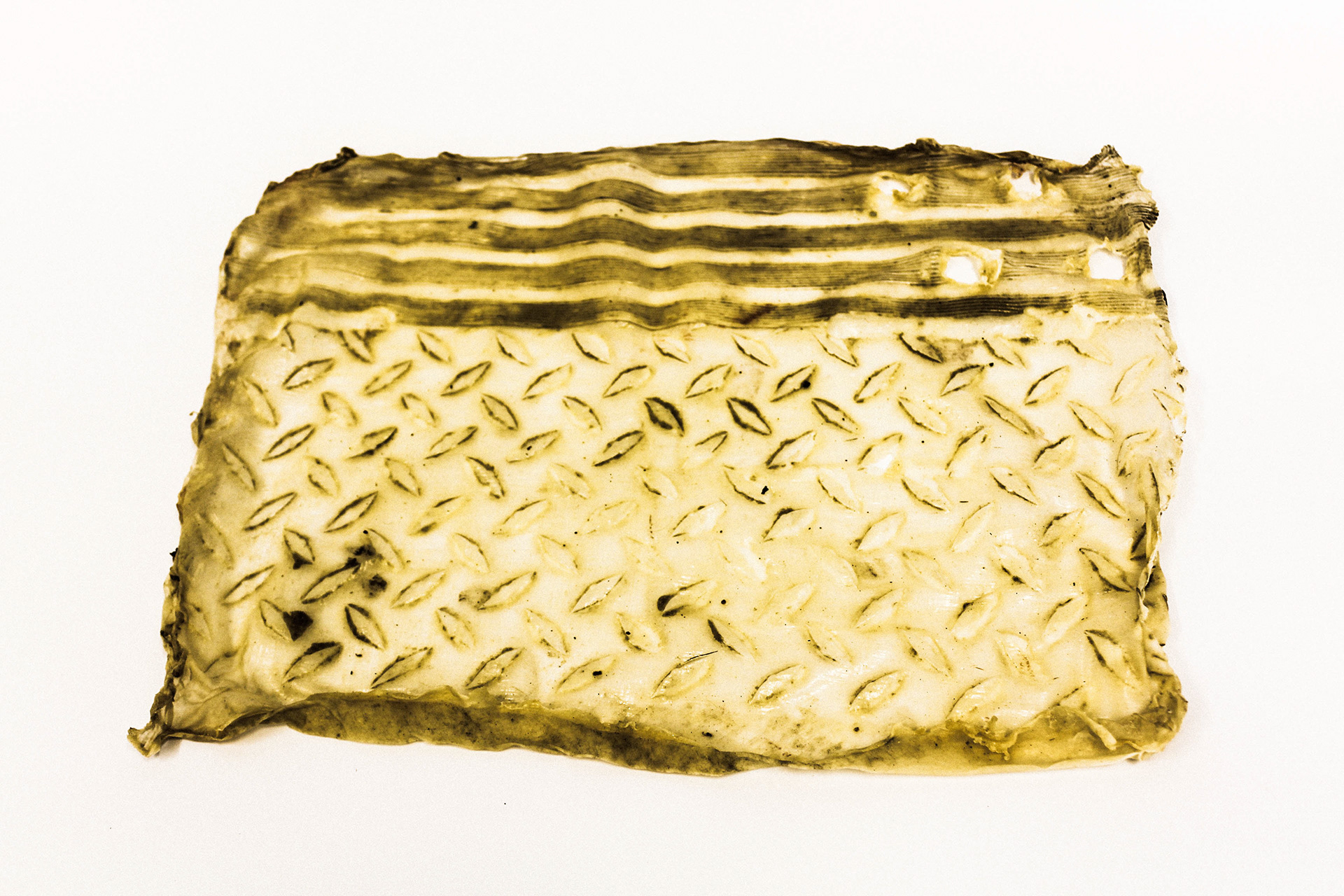
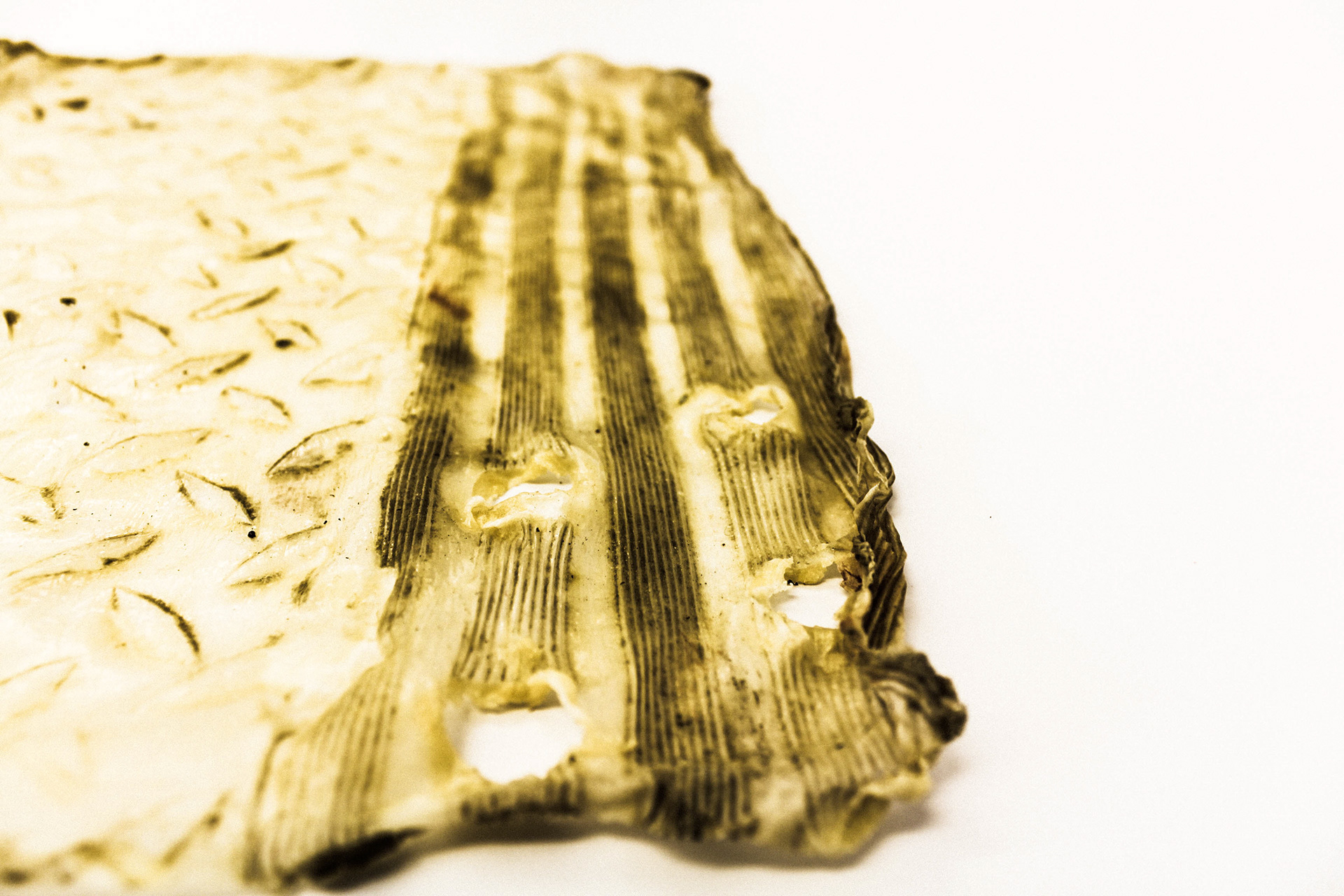



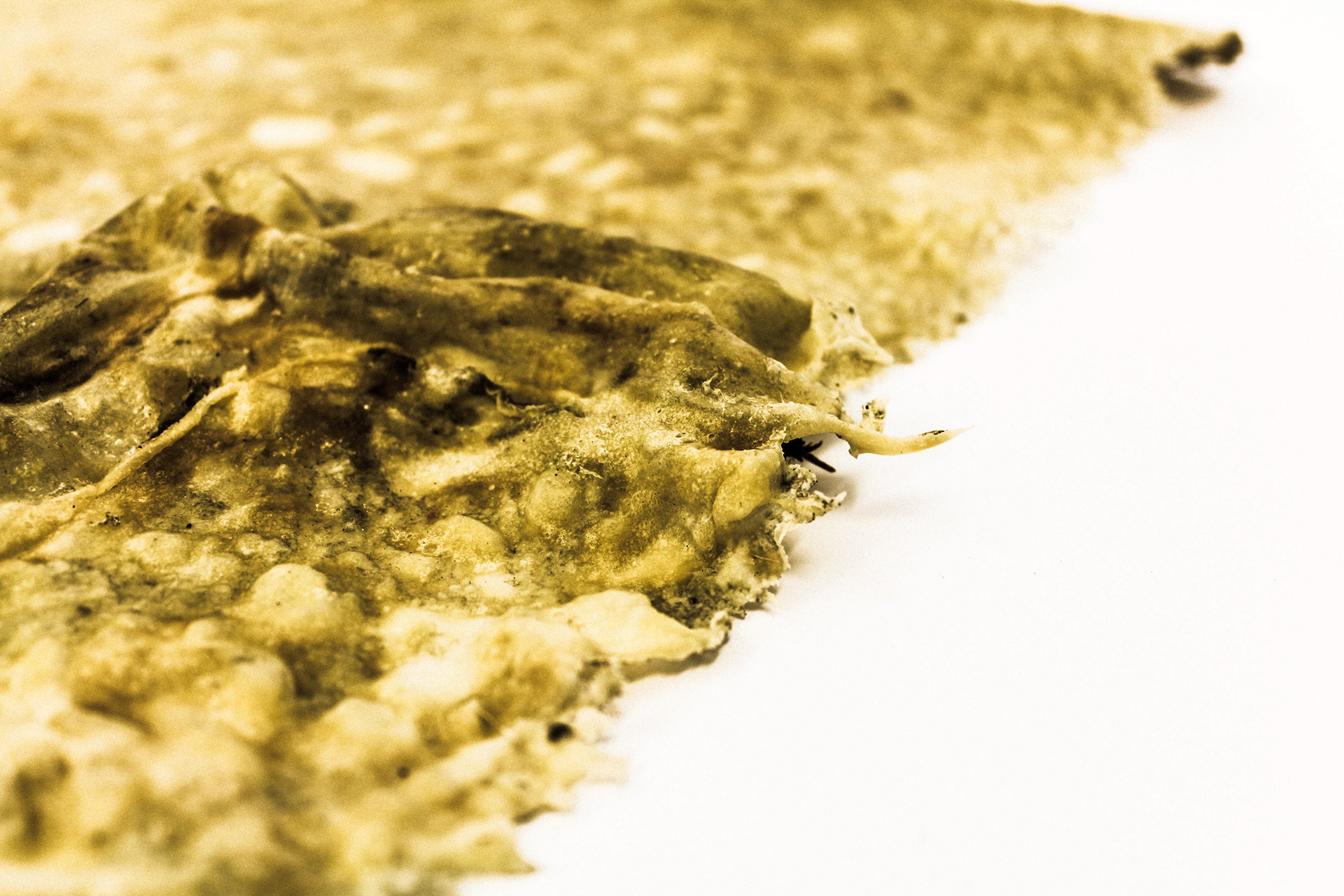
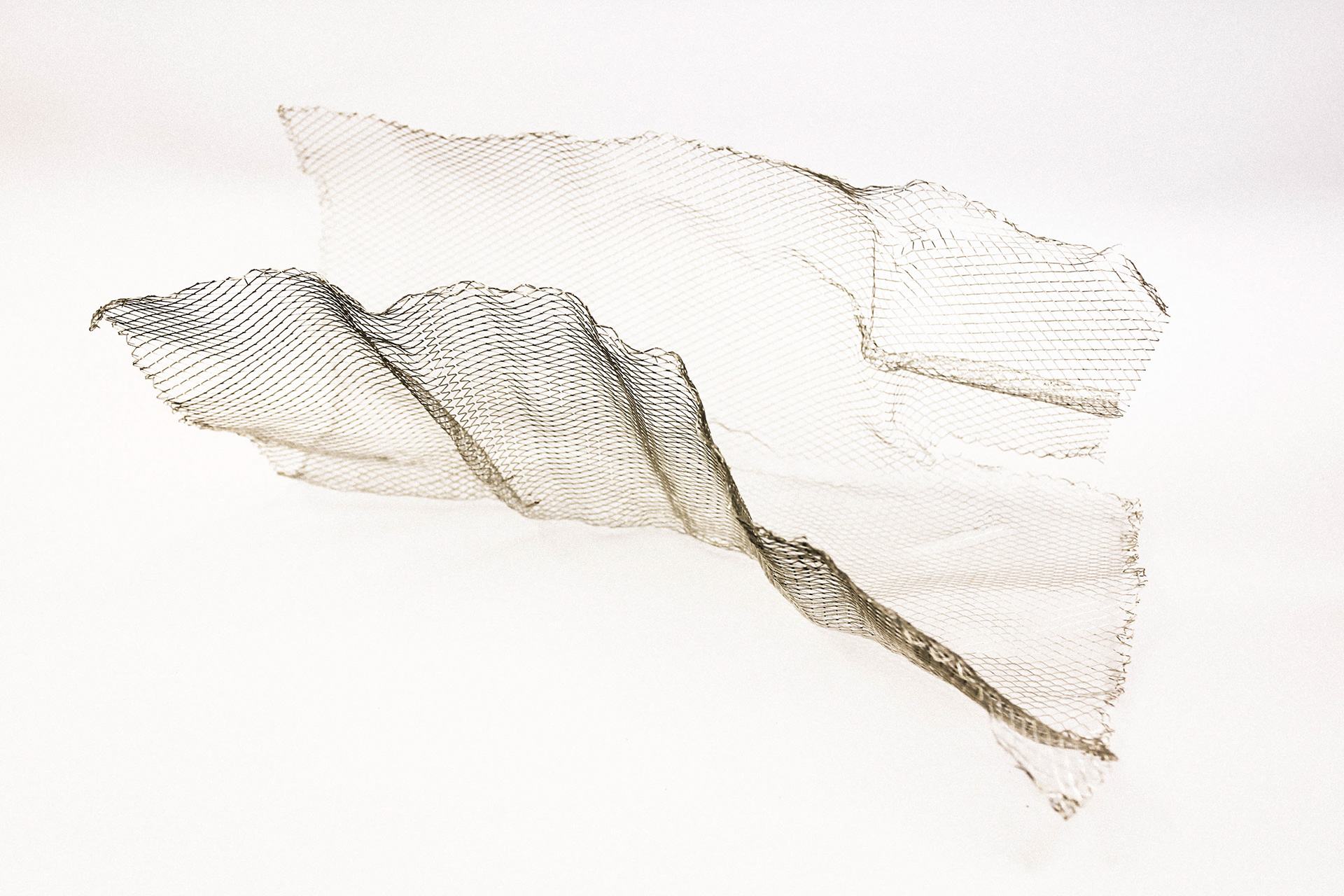

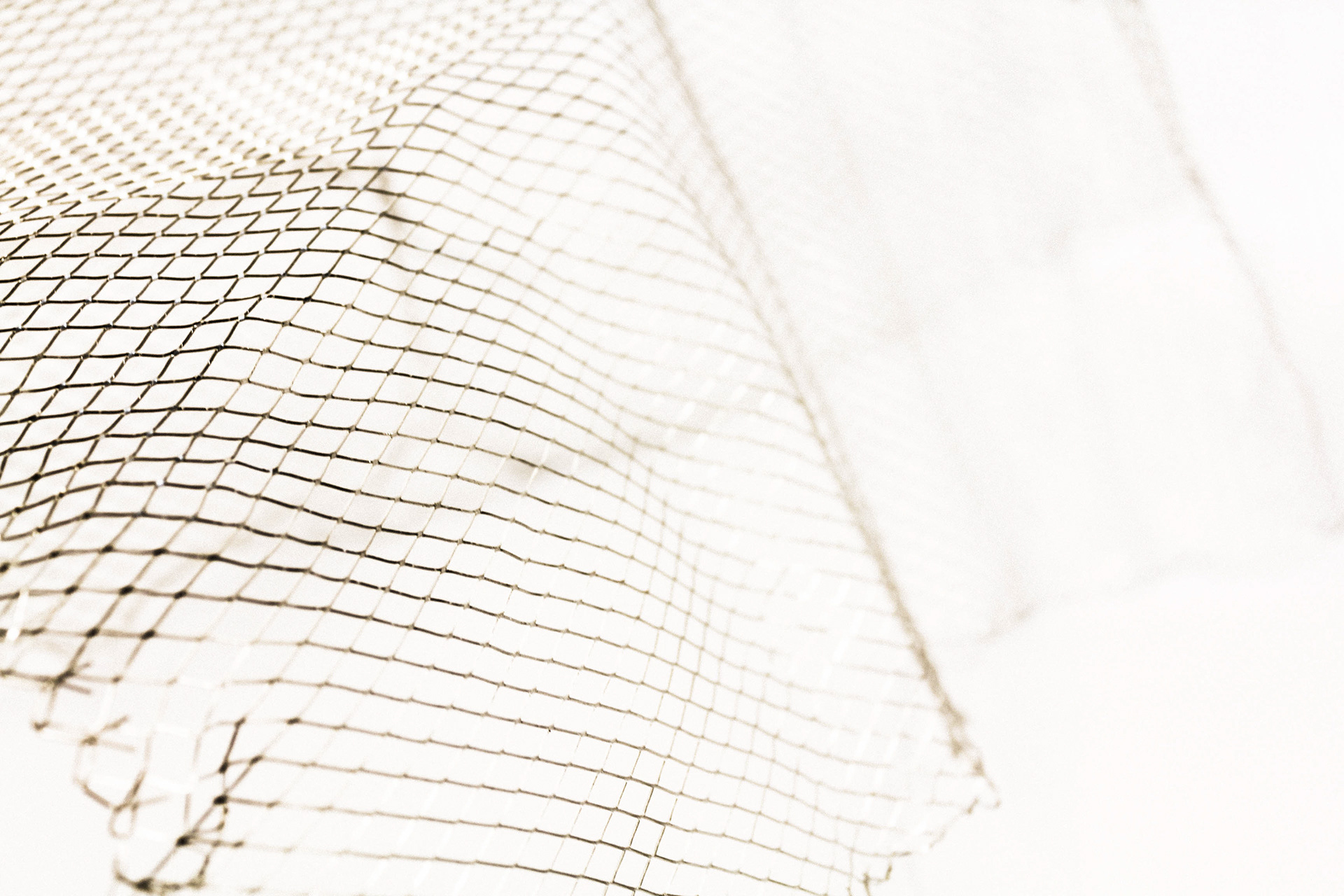
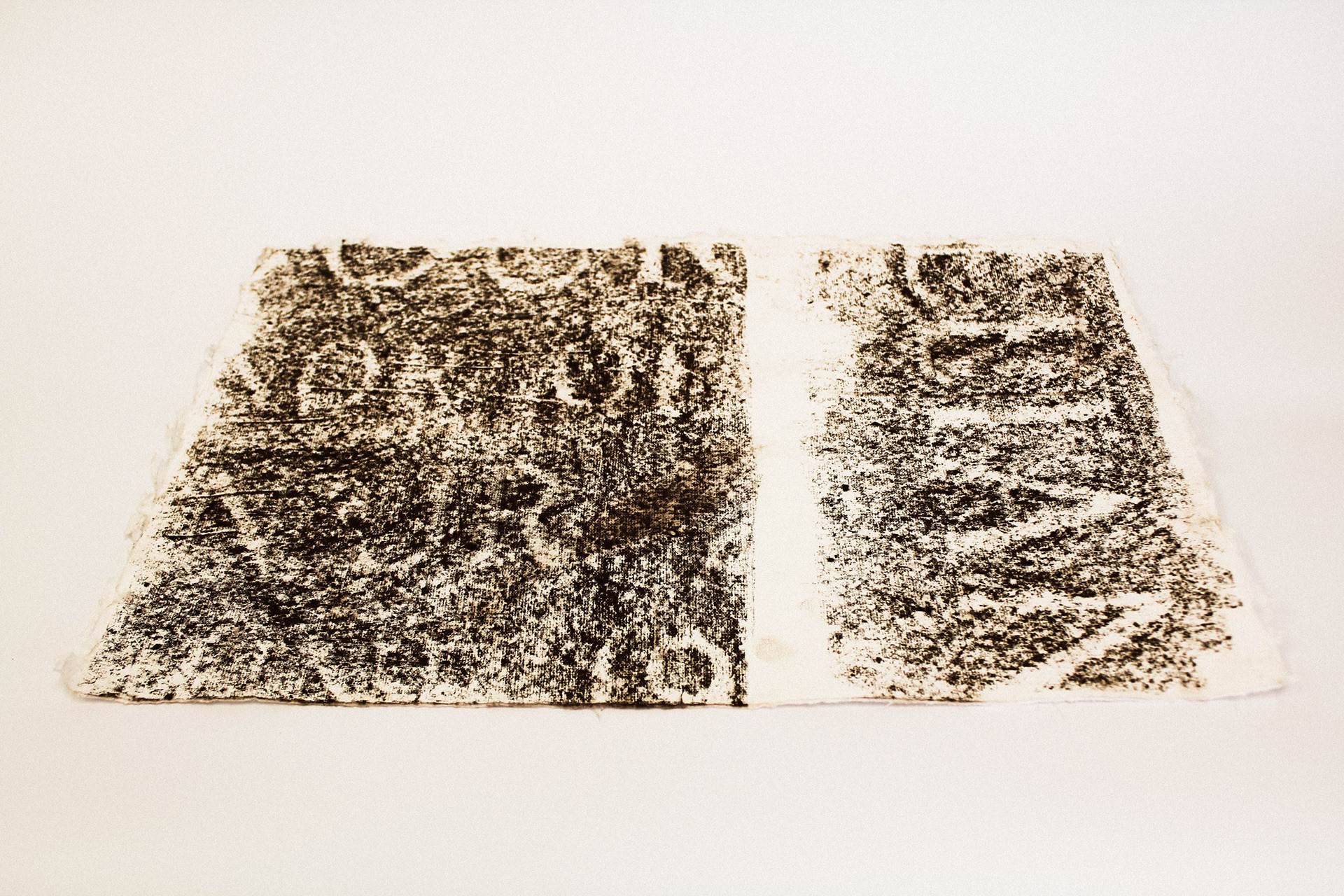
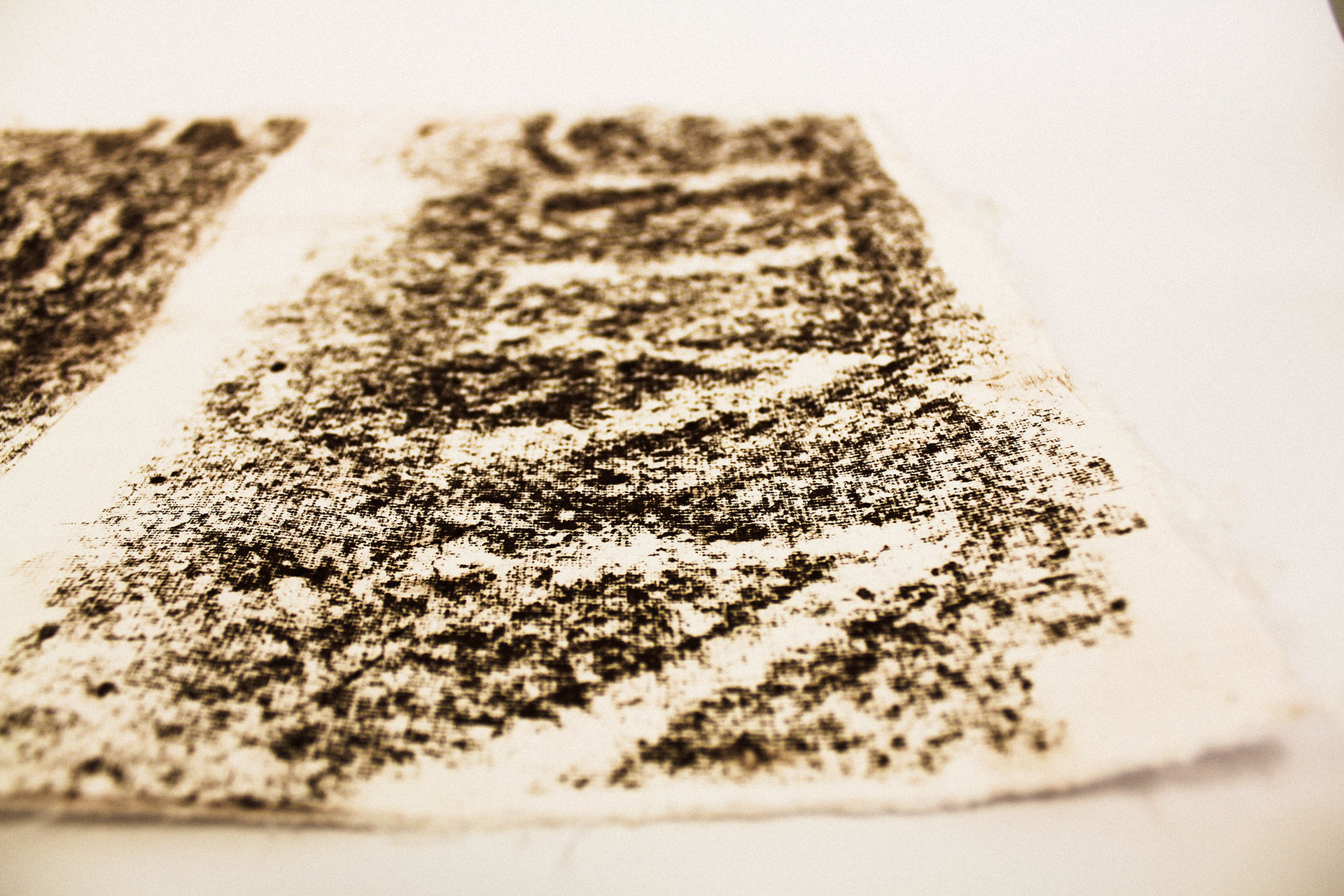
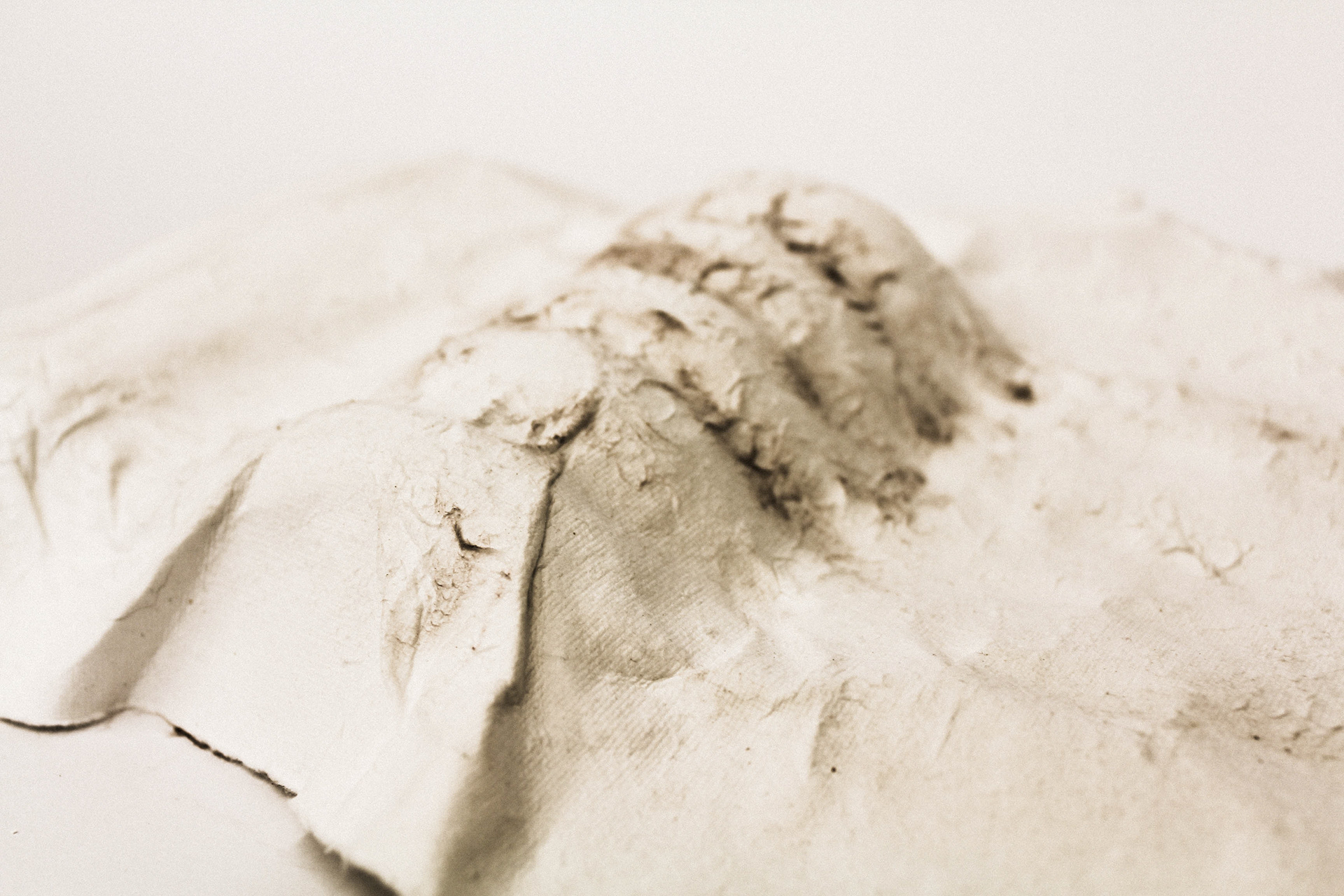
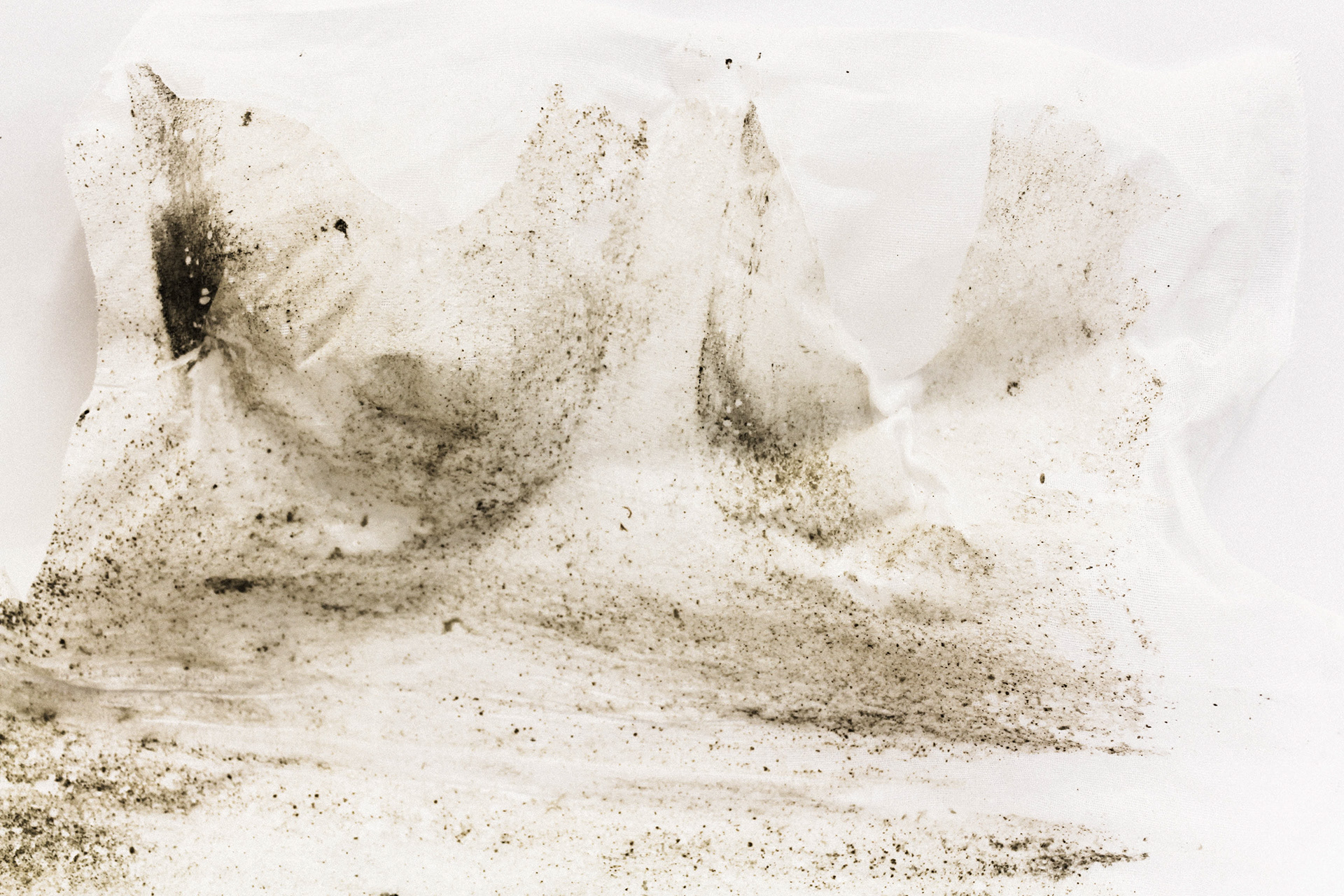

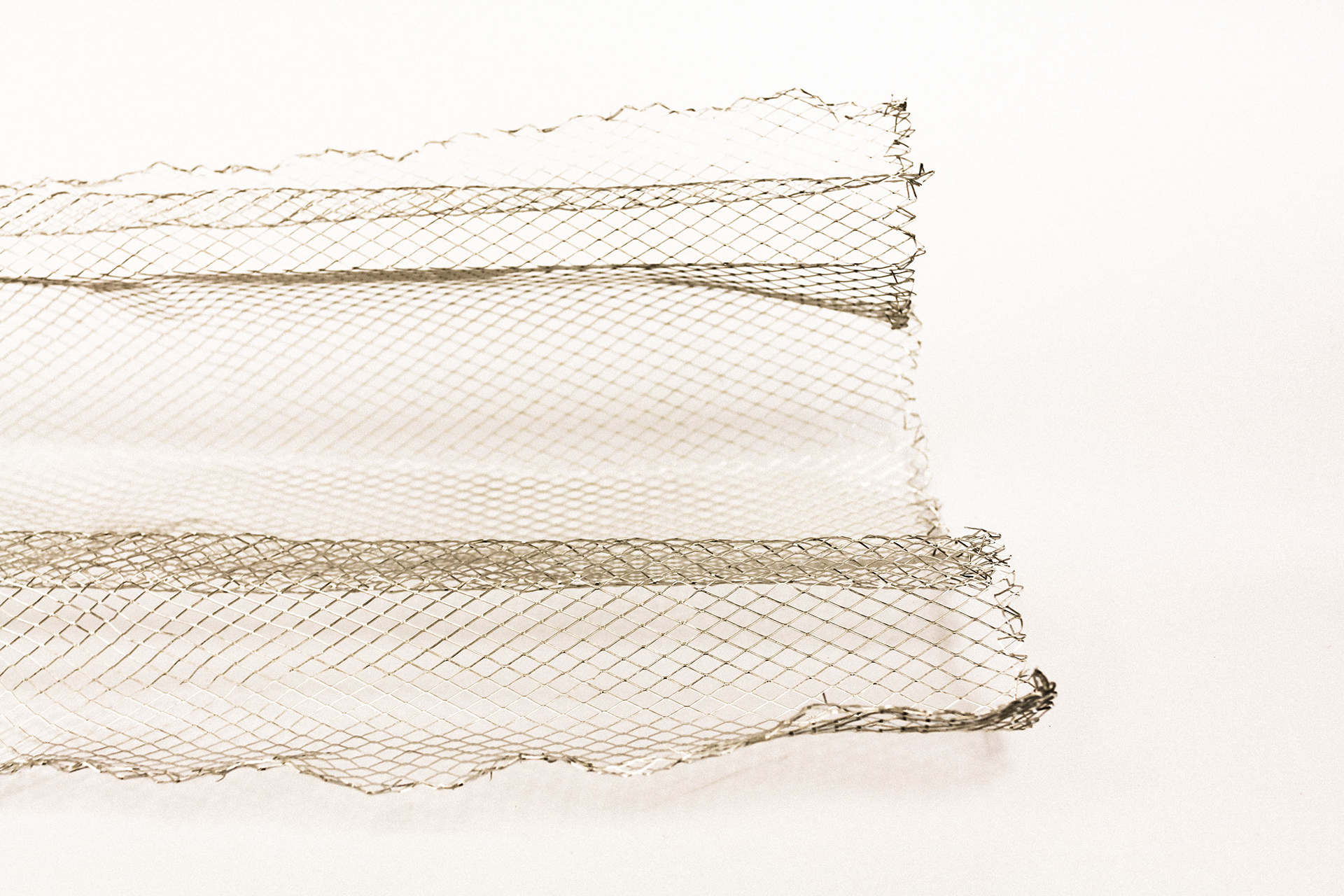
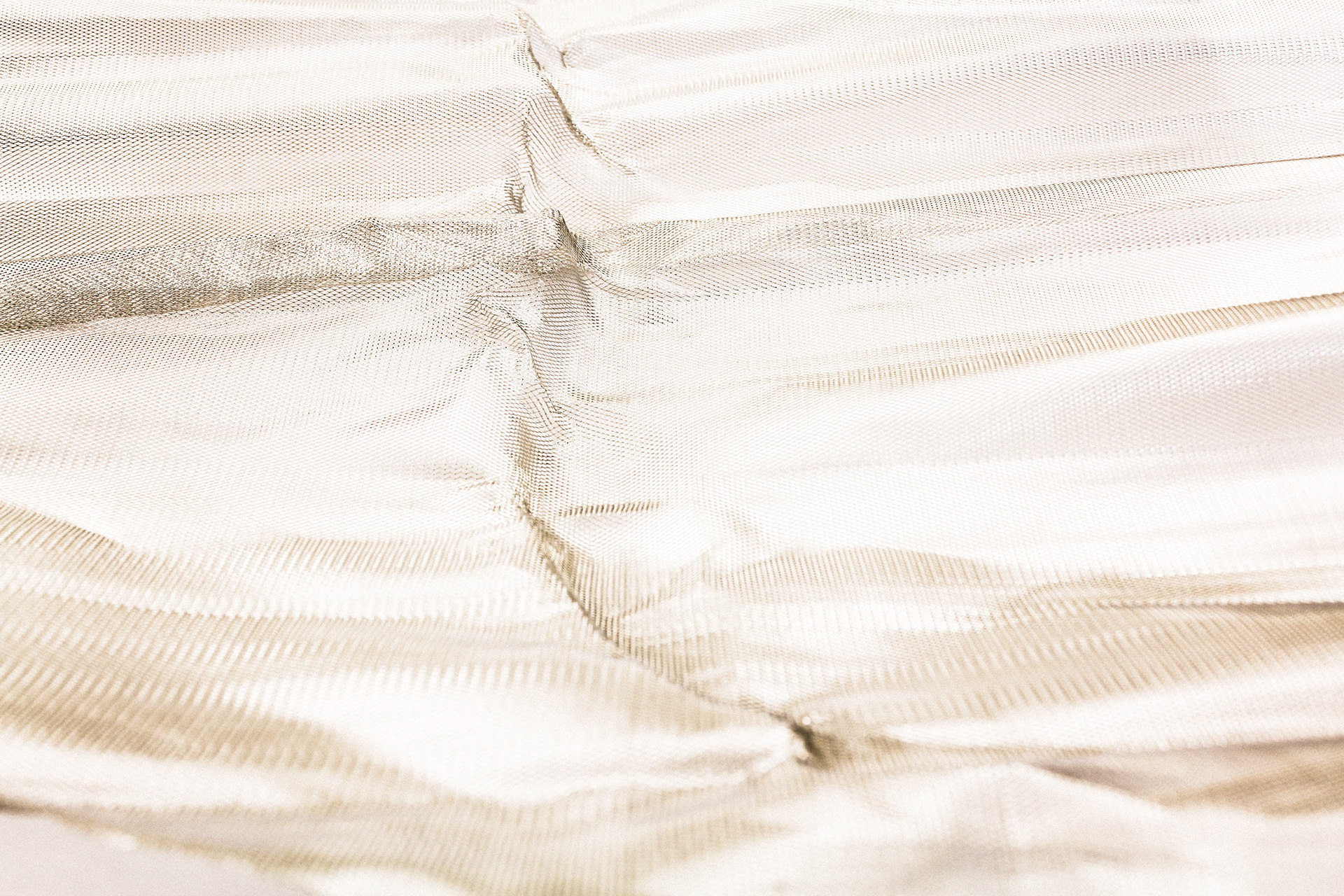

MIT adopts a public image rooted in rationality and totalizing objectivity through the pervasive presence of neoclassical architecture across campus. We seek to critique these institutional ideals by defamiliarizing and reclaiming the semantic and physical tropes of neoclassicism. The room that wears the body and the body that wears the room takes place in our various methods of translation between the institution’s objective form to its newfound means of data collection where the imperfect and in-betweens are embraced.
Our project proposes an architectural syntax of disorder, in contrast to the classical orders that have afforded legibility to their language for millennia. We challenge the seemingly absolute geometric forms that are assumed to separate subjective human judgment from the presumed objective truth. A 3D scan of MIT’s ionic columns is assumed to absorb and perpetuate their rational ideology.
We look to problematize the assumed neutrality of this technology, and to harness its subjectivity to reclaim the architecture of our institution. Although 3D scanning technology relies on indisputably “accurate” data, it is ripe with inaccuracies borne from granular imprecision (edge noise, ghost points), and fundamentally relies on the shaky presumption that the world it scans is unchanging. This edge noise becomes our site, and ghosts points our medium. What are the formal repercussions when a 3D scan is taken as the architectural truth it claims to be? Can we create a new architectural language that implicates the institutional body?
Our project proposes an architectural syntax of disorder, in contrast to the classical orders that have afforded legibility to their language for millennia. We challenge the seemingly absolute geometric forms that are assumed to separate subjective human judgment from the presumed objective truth. A 3D scan of MIT’s ionic columns is assumed to absorb and perpetuate their rational ideology.
We look to problematize the assumed neutrality of this technology, and to harness its subjectivity to reclaim the architecture of our institution. Although 3D scanning technology relies on indisputably “accurate” data, it is ripe with inaccuracies borne from granular imprecision (edge noise, ghost points), and fundamentally relies on the shaky presumption that the world it scans is unchanging. This edge noise becomes our site, and ghosts points our medium. What are the formal repercussions when a 3D scan is taken as the architectural truth it claims to be? Can we create a new architectural language that implicates the institutional body?
THE COLUMN_SUPERIMPOSED ONTO MIT'S BUILDING INTERIOR
DIGITAL TRANSLATIONS
New digital tools meant to erase human subjectivity from the data collection process (3D scanning): resulting in a point cloud which generates a form that is ripe with its own inaccuracies, erroneous data, and only bears a generalized resemblance to the original geometry the column was built from.
3D SCAN POINT CLOUD DETAILS
The nebulous nature of the point data has qualities of its own that informed our fabrication process for the room. The lightness and gaps in the information helped us to de-solidify our reading of familiar forms. We selected moments on the scan data that represented new potential typologies and fabricated them in white Styrofoam. The particulate nature of the foam evokes the point cloud data, that presents a unified form through an accumulation of miniscule parts. Its own lightness undermines the heaviness in physicality and ideals of classical architecture. We embraced the difficulties of working with a CNC router, and adopted the failings in fabrication into our formal language, which is flawed in its essence. We like their inherent humor and uncleanliness, which questions the purity normally ascribed to whiteness in institutional architecture. Like the carving of stone, the CNC implies a process of orthographic removal and form finding from solid block form towards linguistic creation.

